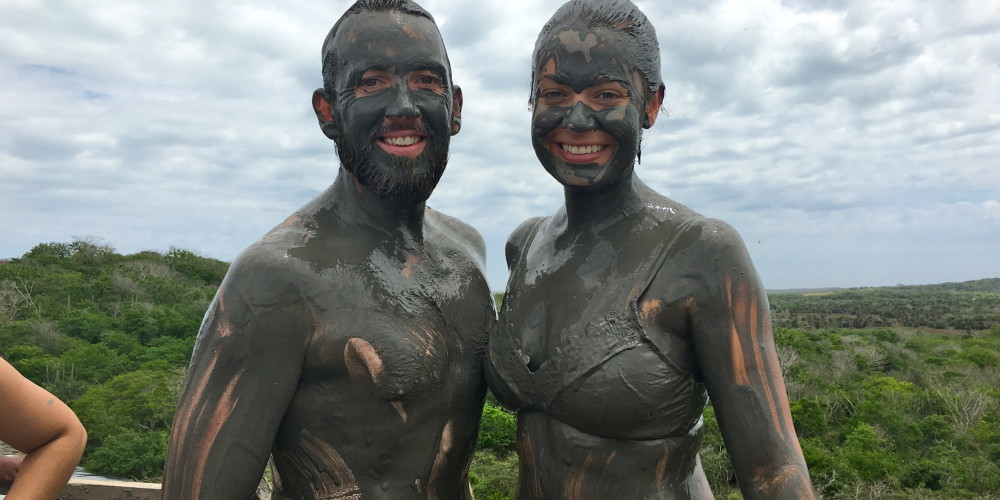We arrived into Cartagena pretty late at night following a lengthy 12-hour transit from Capurgana and it wasn’t until the next morning that we got our first real glimpse of what a beautiful place Colombia’s largest seaside city truly is.
As with most of the Spanish influenced towns we have visited (most of Central America), there was an ‘old town’ with colonial architecture, narrow cobblestone streets and colour everywhere you can see – from the houses, to the flowers, to the outfits on the locals.
In Cartagena’s case, the old town is a bit more unique than others – it is encircled with an old wall that protected the city sometimes better than others) from pirates and invaders from the 15th century right the way through until the mid 1800’s. The wall is largely still standing (I think 90% or more) and is complete with lookout towers and windows through which to shoot rifles and cannons – fascinating to see firsthand.
In order to get to know Cartagena, and indeed Colombia, a little better – we had after all, decided only a couple of weeks earlier to include the country in our trip so were unfortunately pretty much in the dark on its history – we decided to attend a ‘free’ walking tour of the old town.
As an aside, I actually love the premise of free walking tours (have since seen a few more in different cities) – you don’t pay admission of a fee to attend but you’re asked to tip whatever you want to if you feel the guide did a good job, or if you enjoyed the tour. Most of the tours seem to have about 20-30 people on them, so the guides have a pretty good chance of getting a fair amount of dosh for their time, especially if they’re enthusiastic, passionate and informative.
Our guide, Edgar, was one such guide. The founder of Cartagena Free Walking Tours, he knew Cartagena and Colombia like the back of his hand and was able to explain centuries of history to us in an entertaining and enlightening way without banging on for hours. The tour took about 2.5 hours, and was spent predominantly in the old town area. I would highly recommend it.
Edgar (yellow shirt) with Dave and some of our group
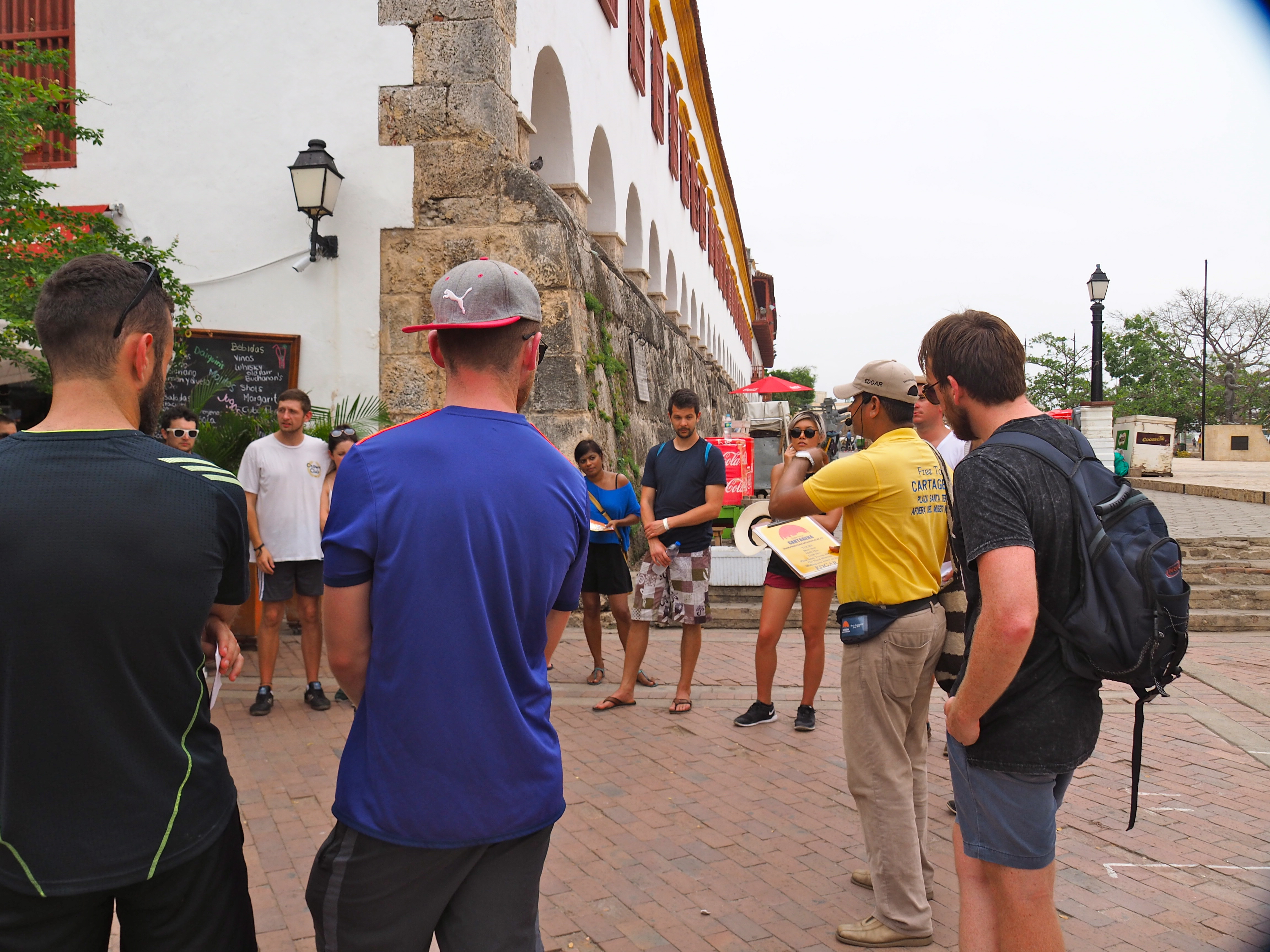
Puerta del Reloj (Clock Gate) – the official entry to the old town and a part of the walled fortress encircling it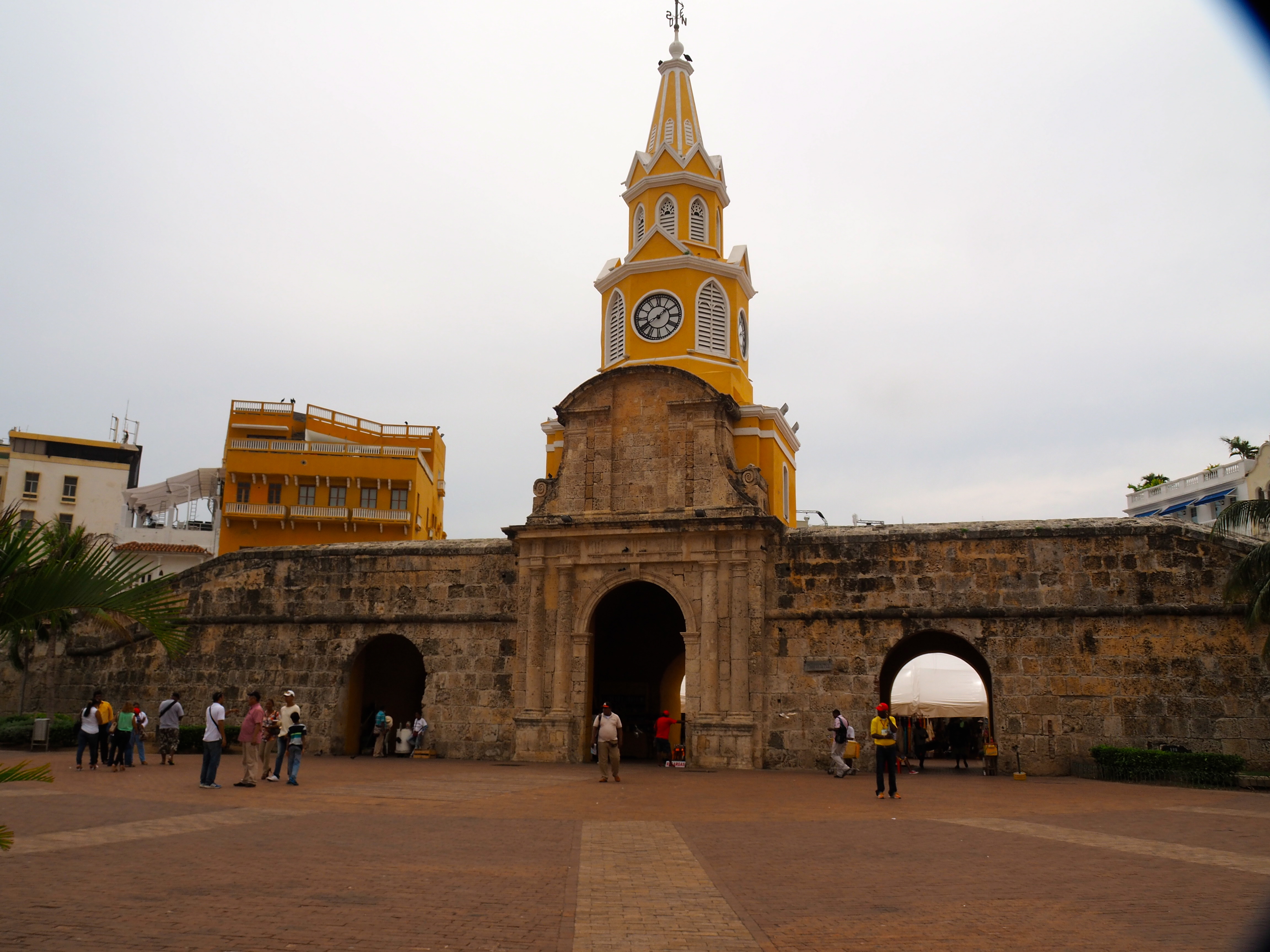
San Pedro Claver Church
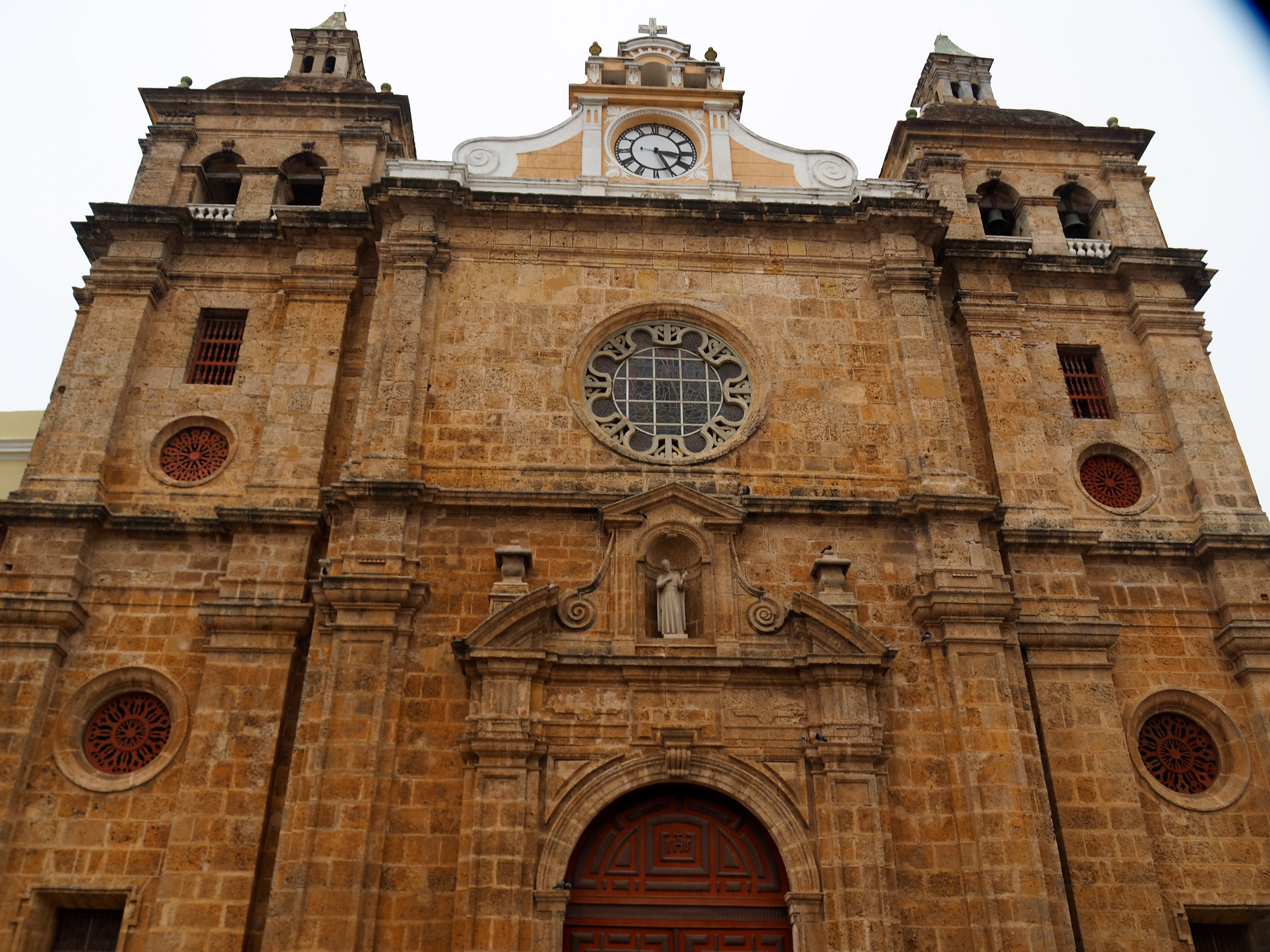
Street Art (and artists!)
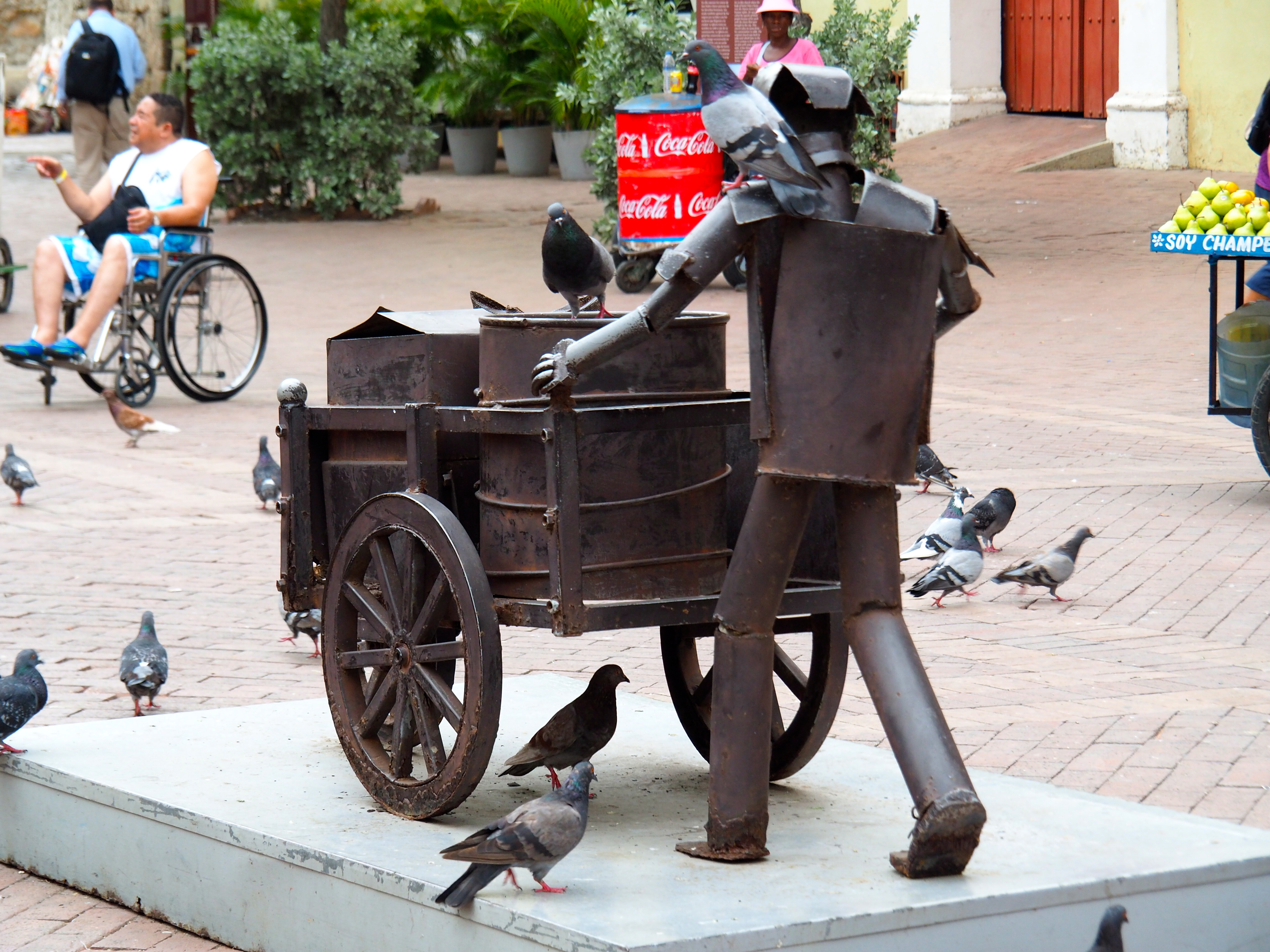
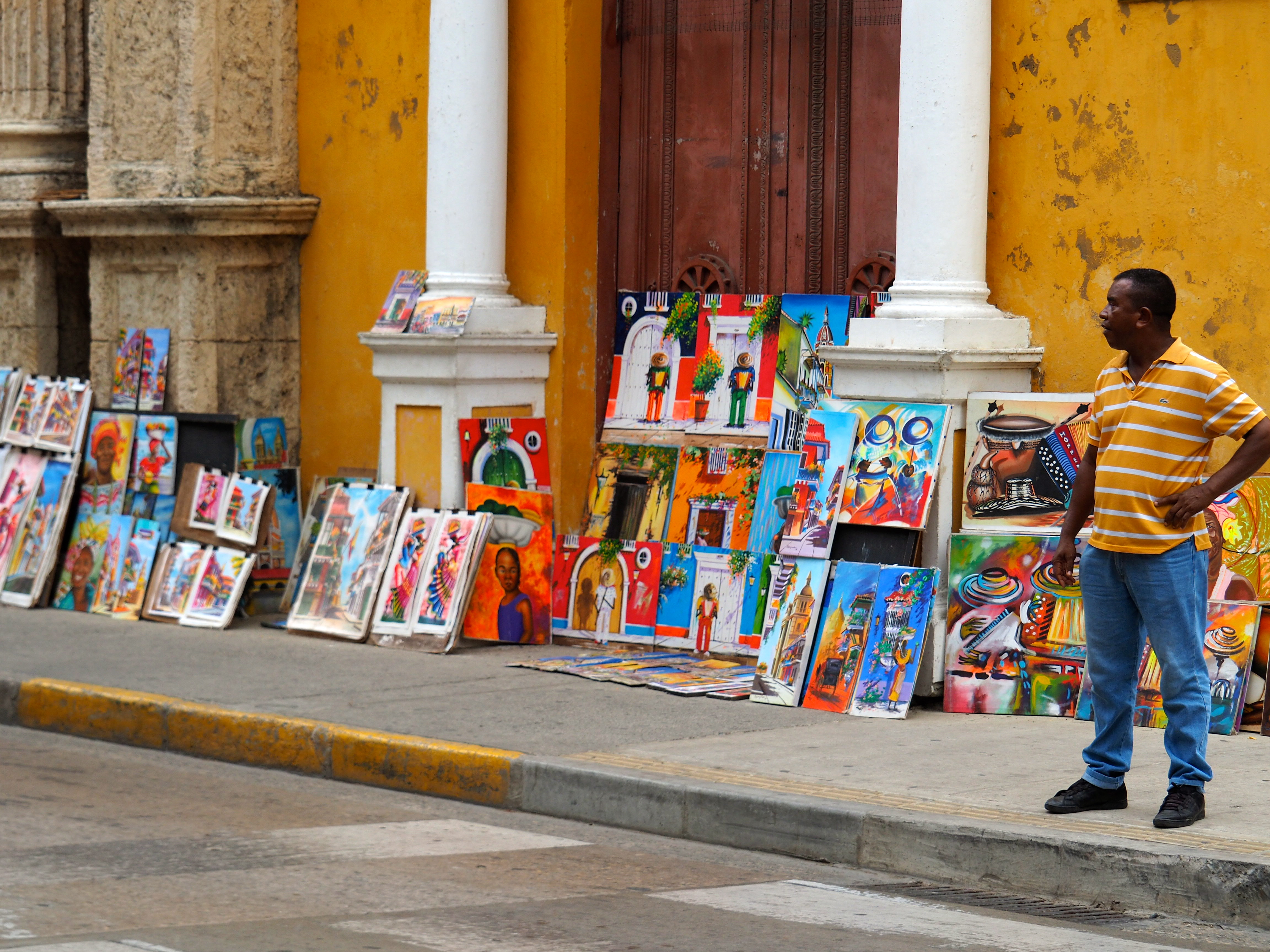
Plaza de Bolivar in honour of the man who
led Colombia’s fight for independence
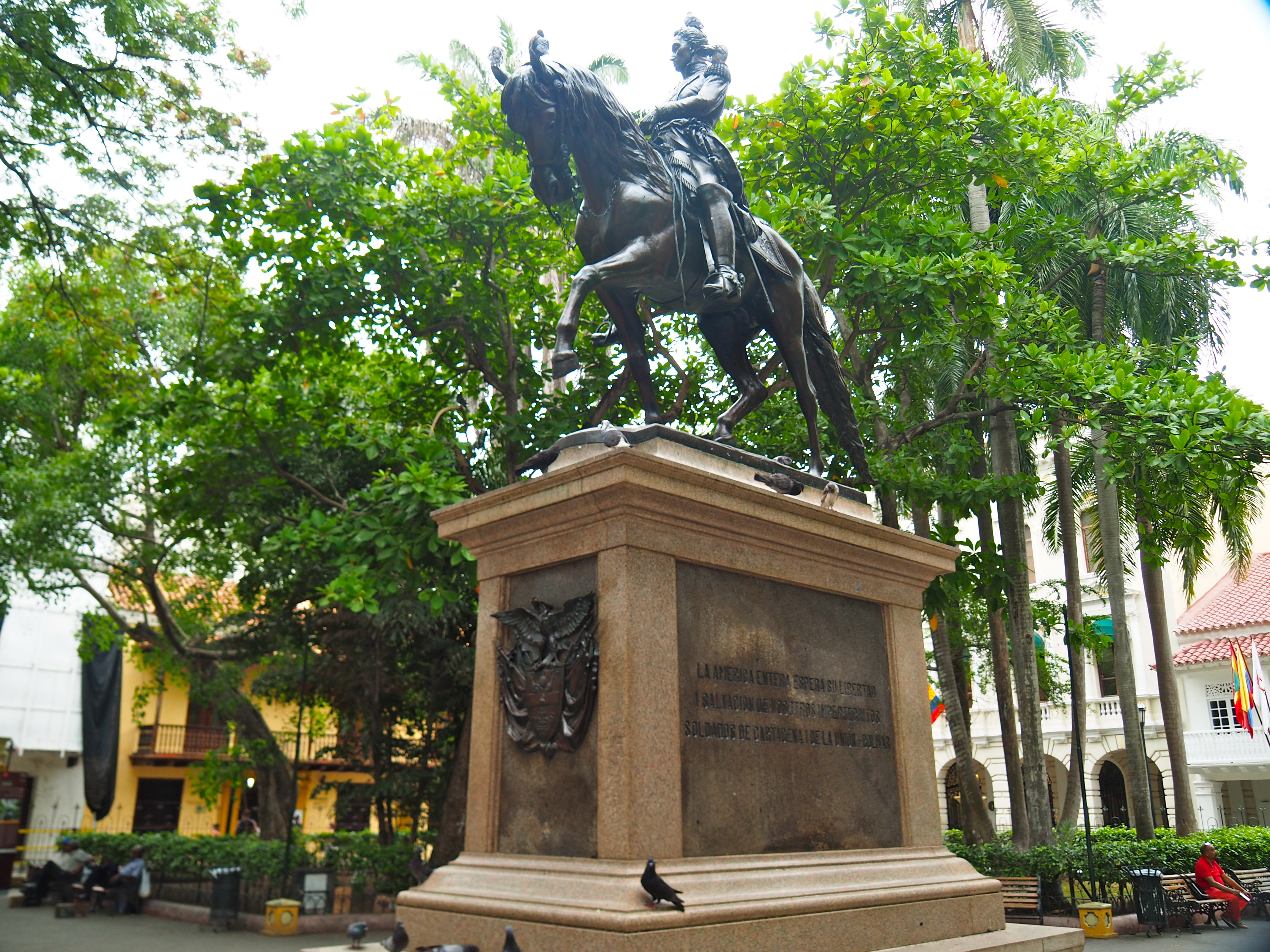
Cathedral of Cartagena, which dates back to the 16th century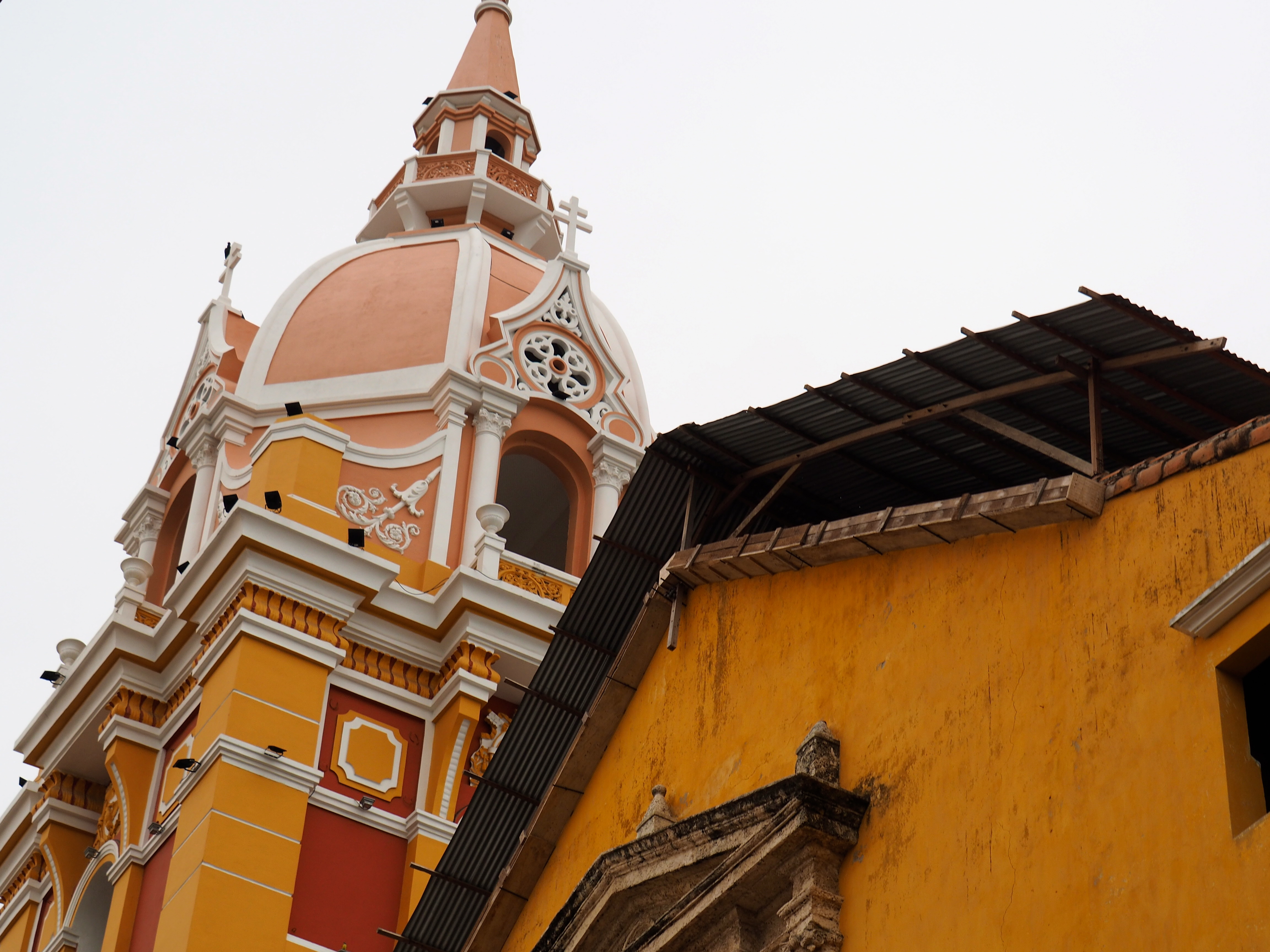
A statue of India Catalina, one of Cartagena’s heroes
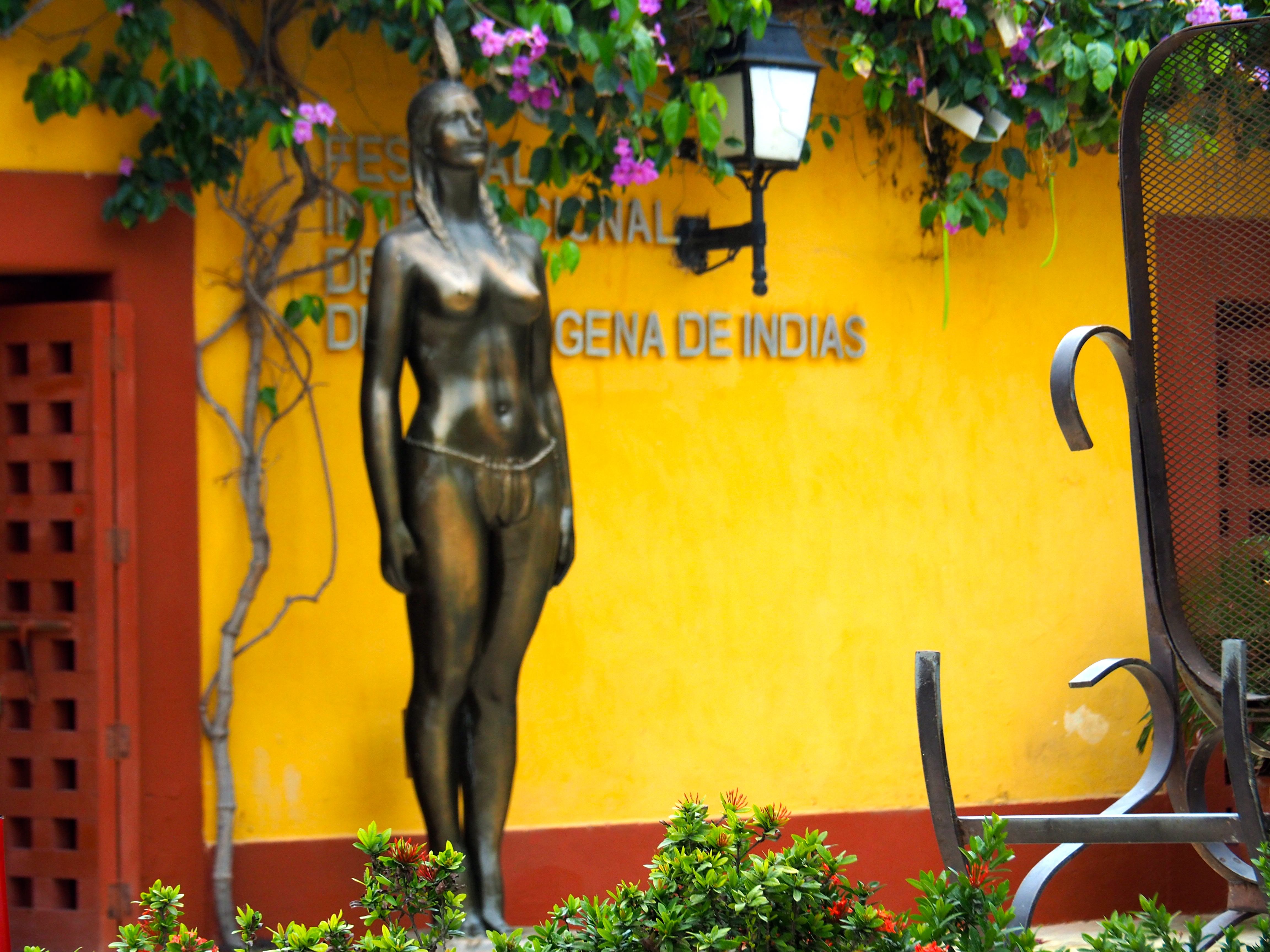
Santo Domingo Church (and gravestones which now form part of the floor)
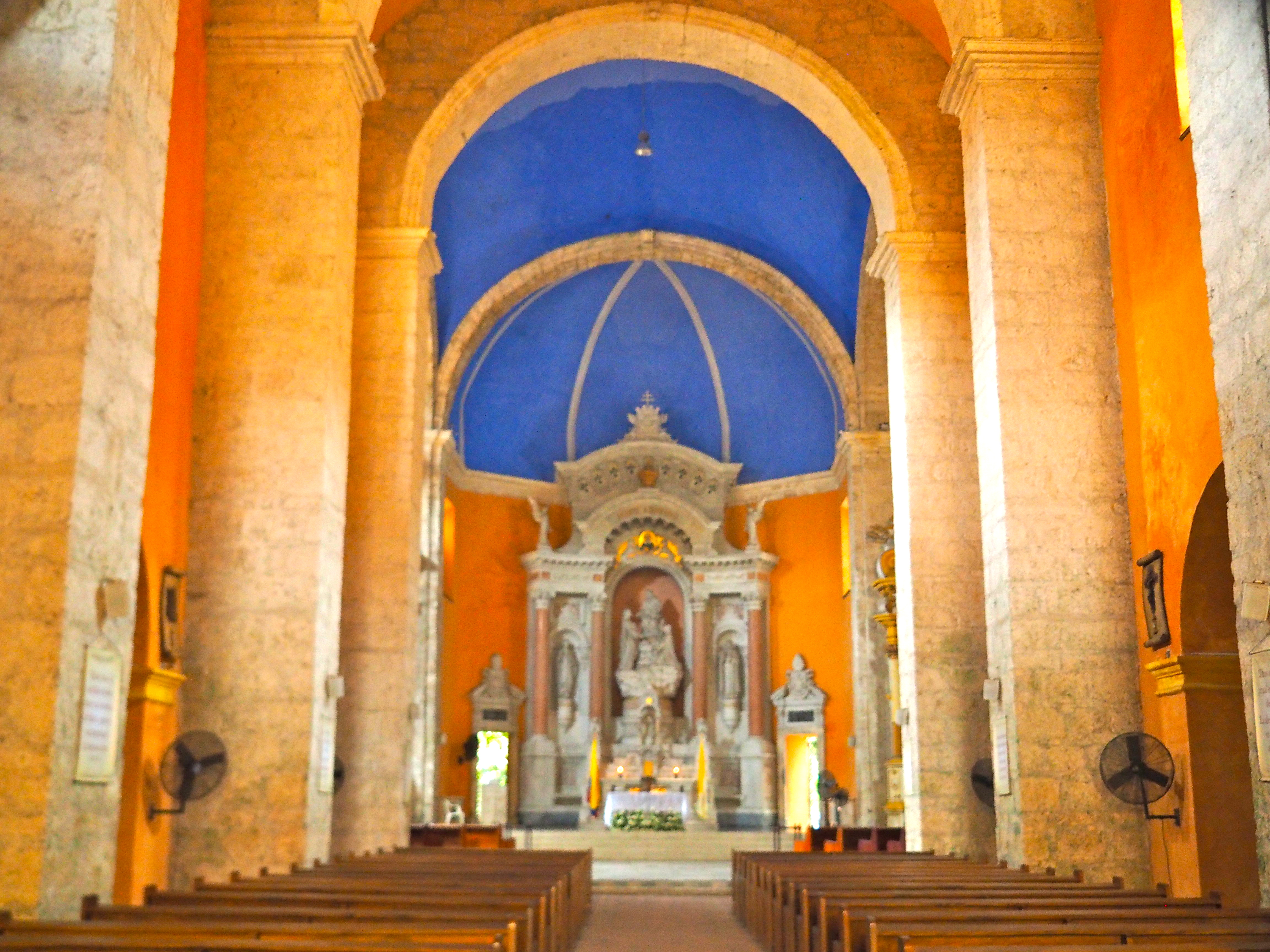
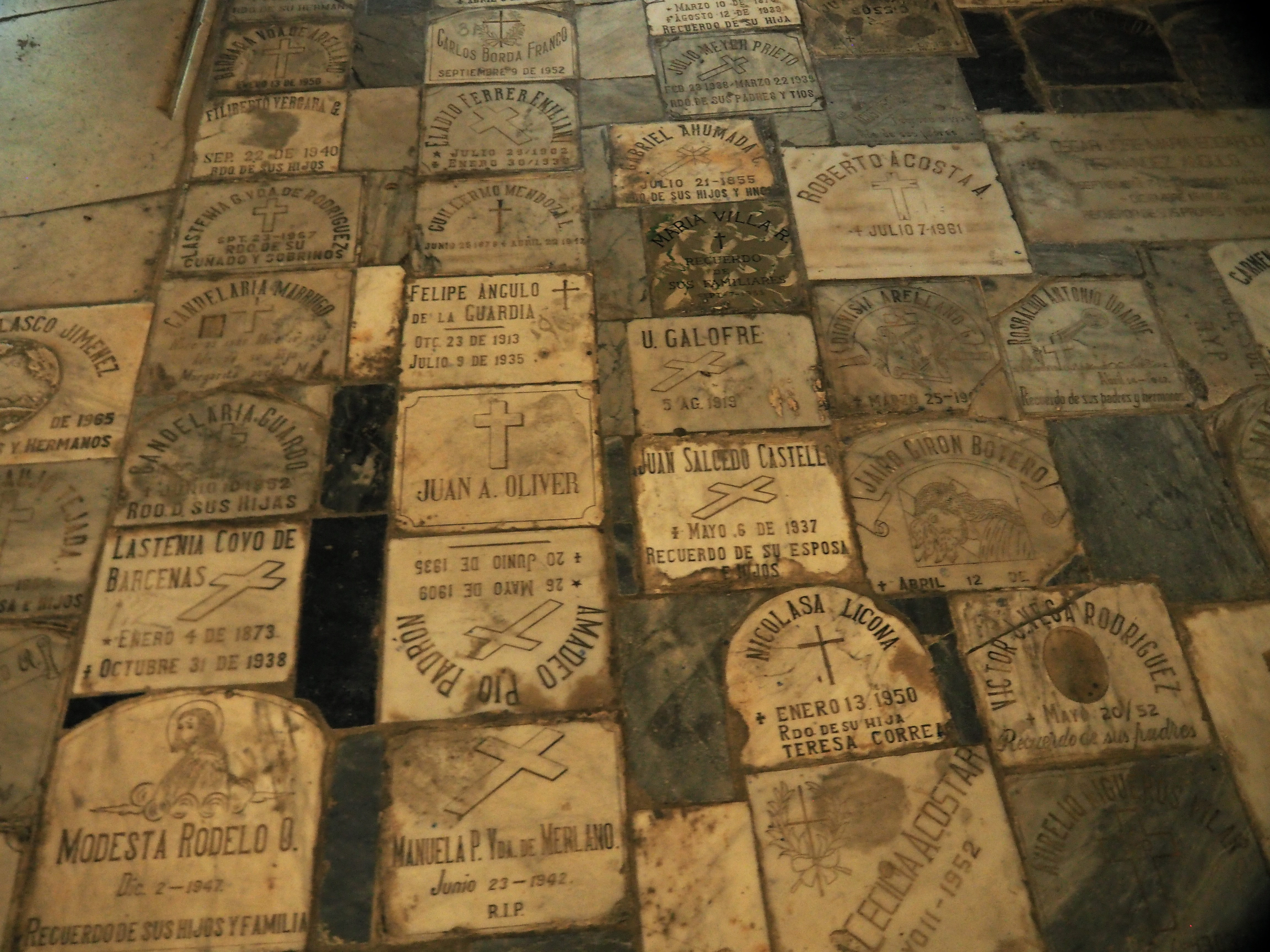
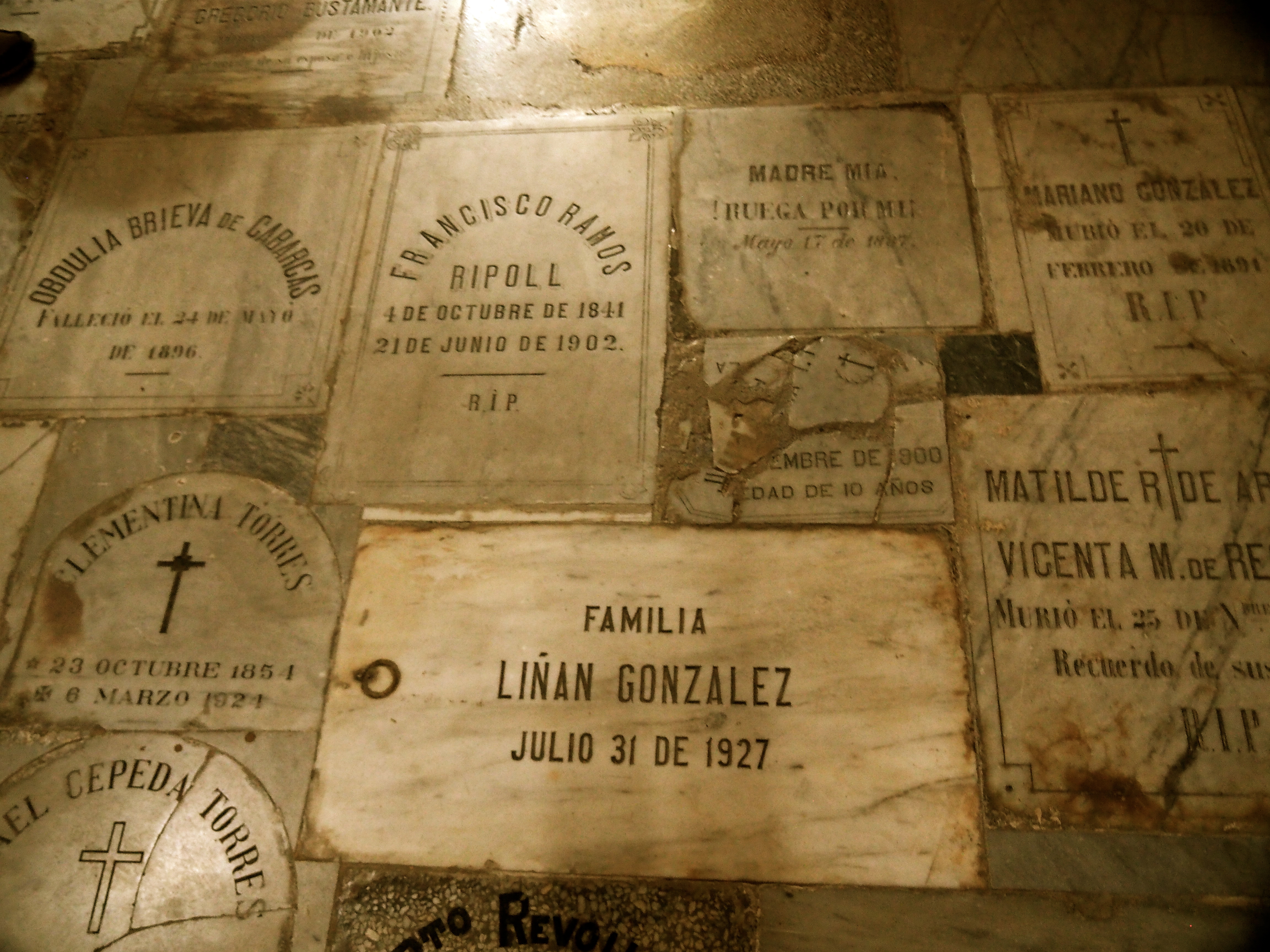
Plaza de la Proclamation
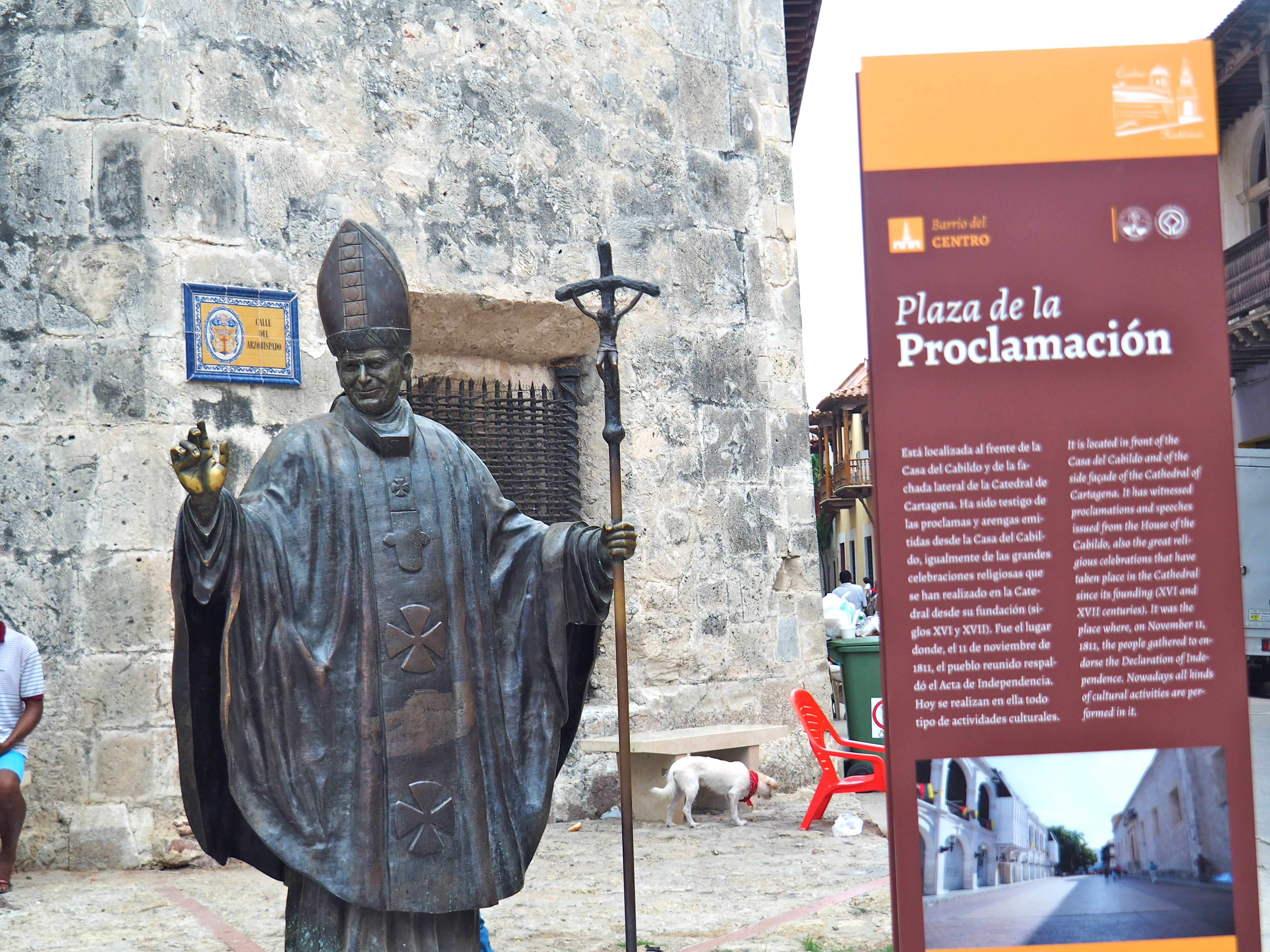
The streetscapes of Cartagena’s Old Town
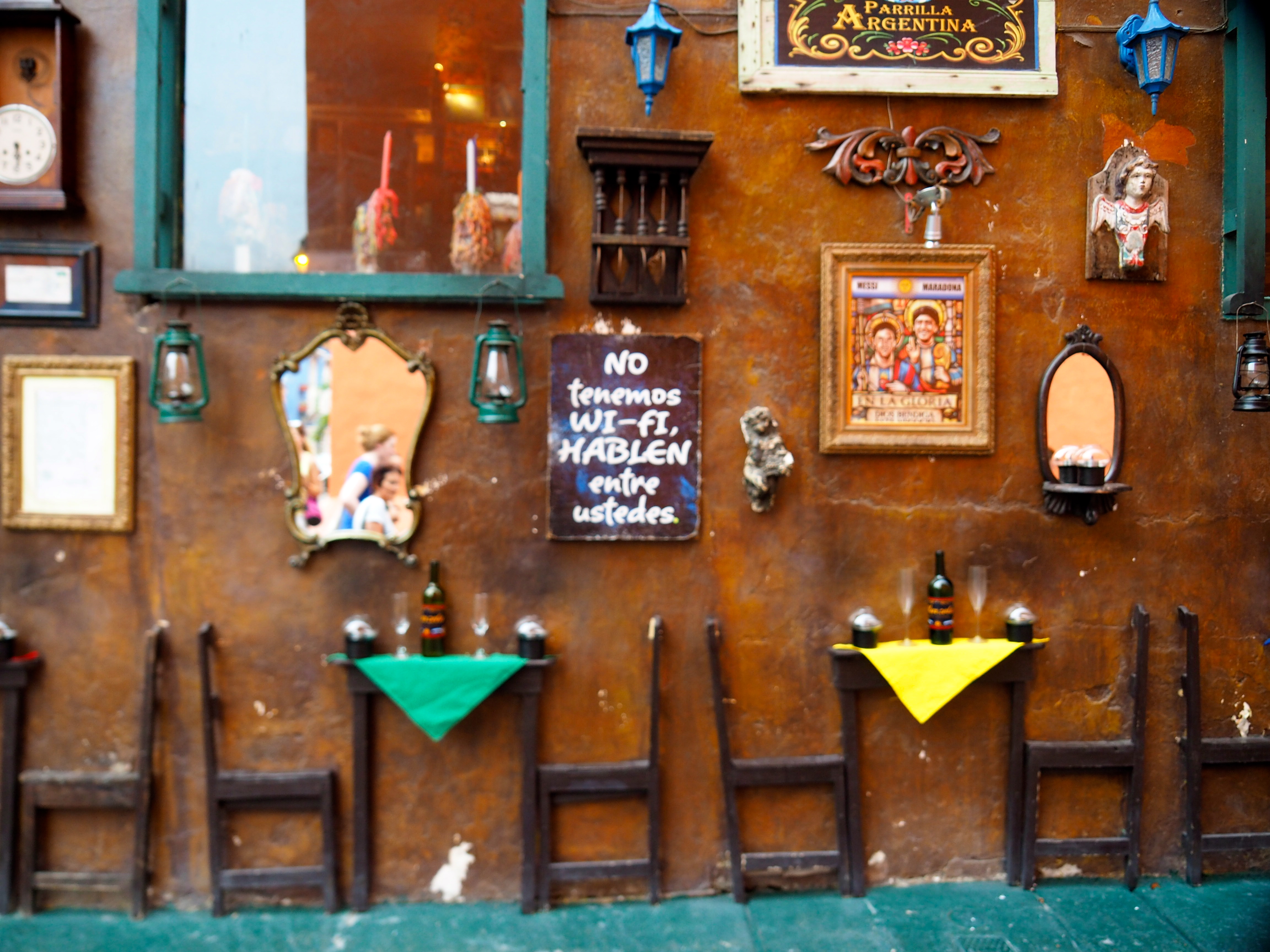
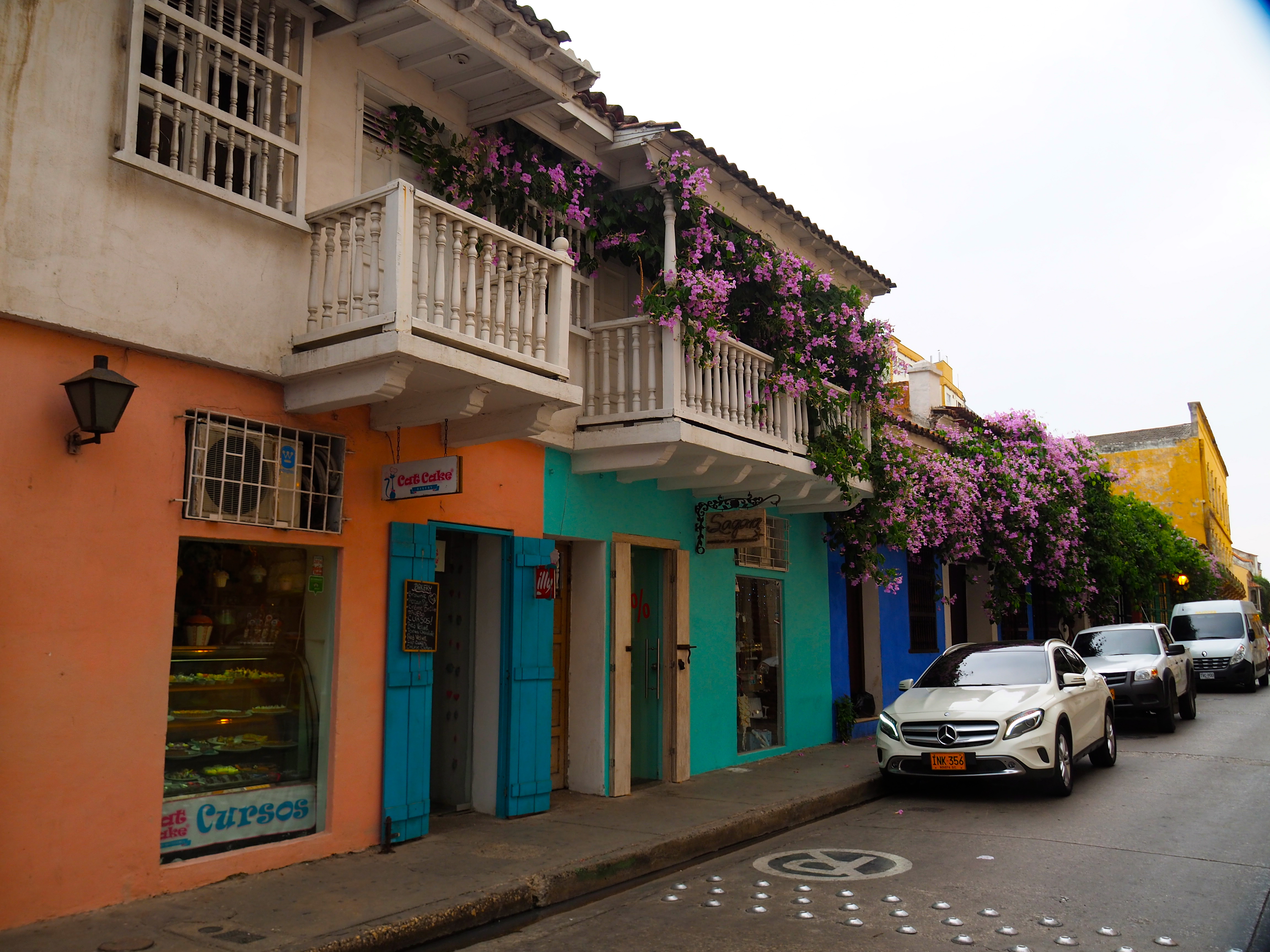
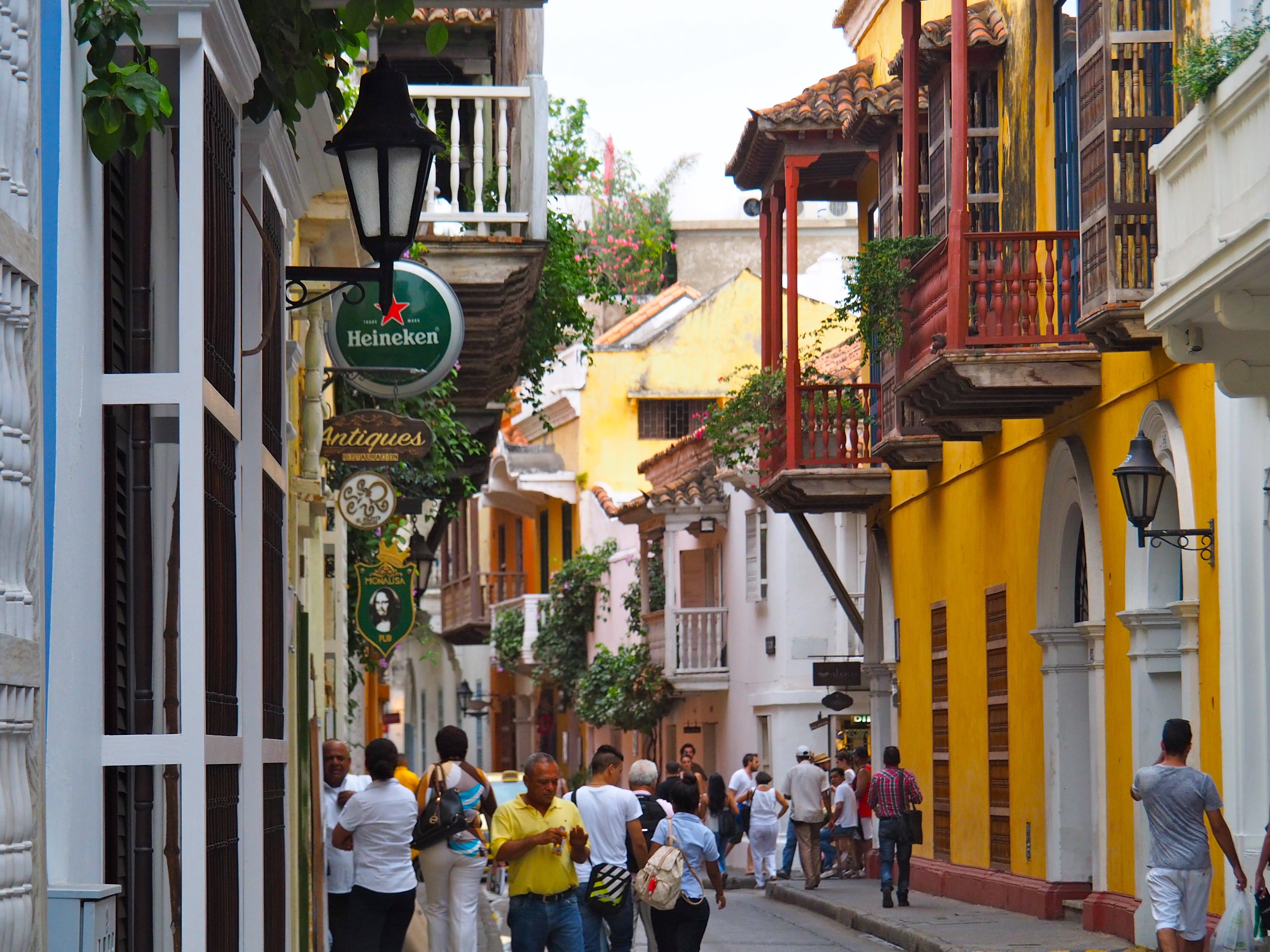
Calle Dulce (Sweet Street), where we indulged in Cartagena’s national sweet of condensed milk and coconut flakes – YUM!
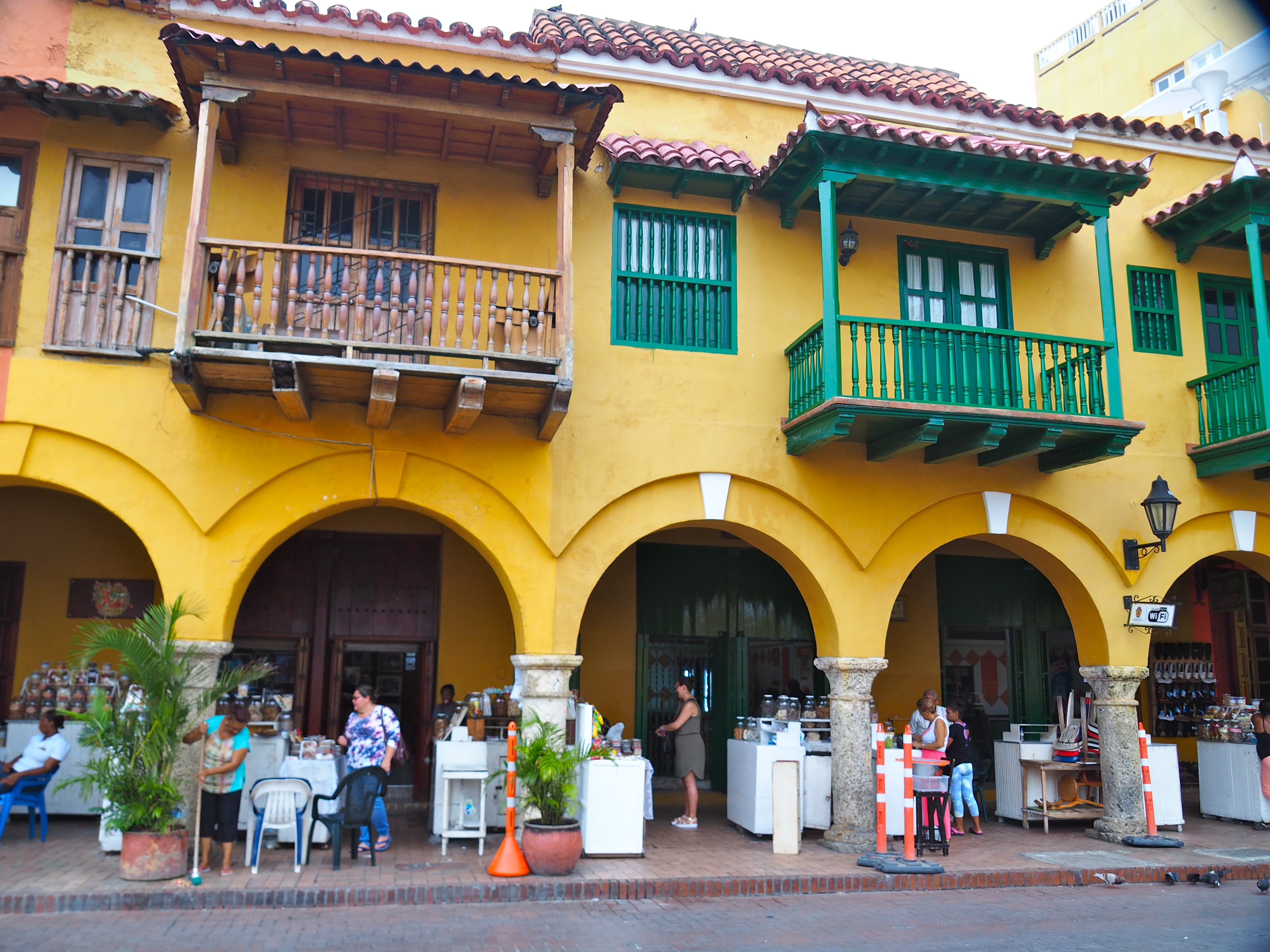
Sunset over the water after the walking tour
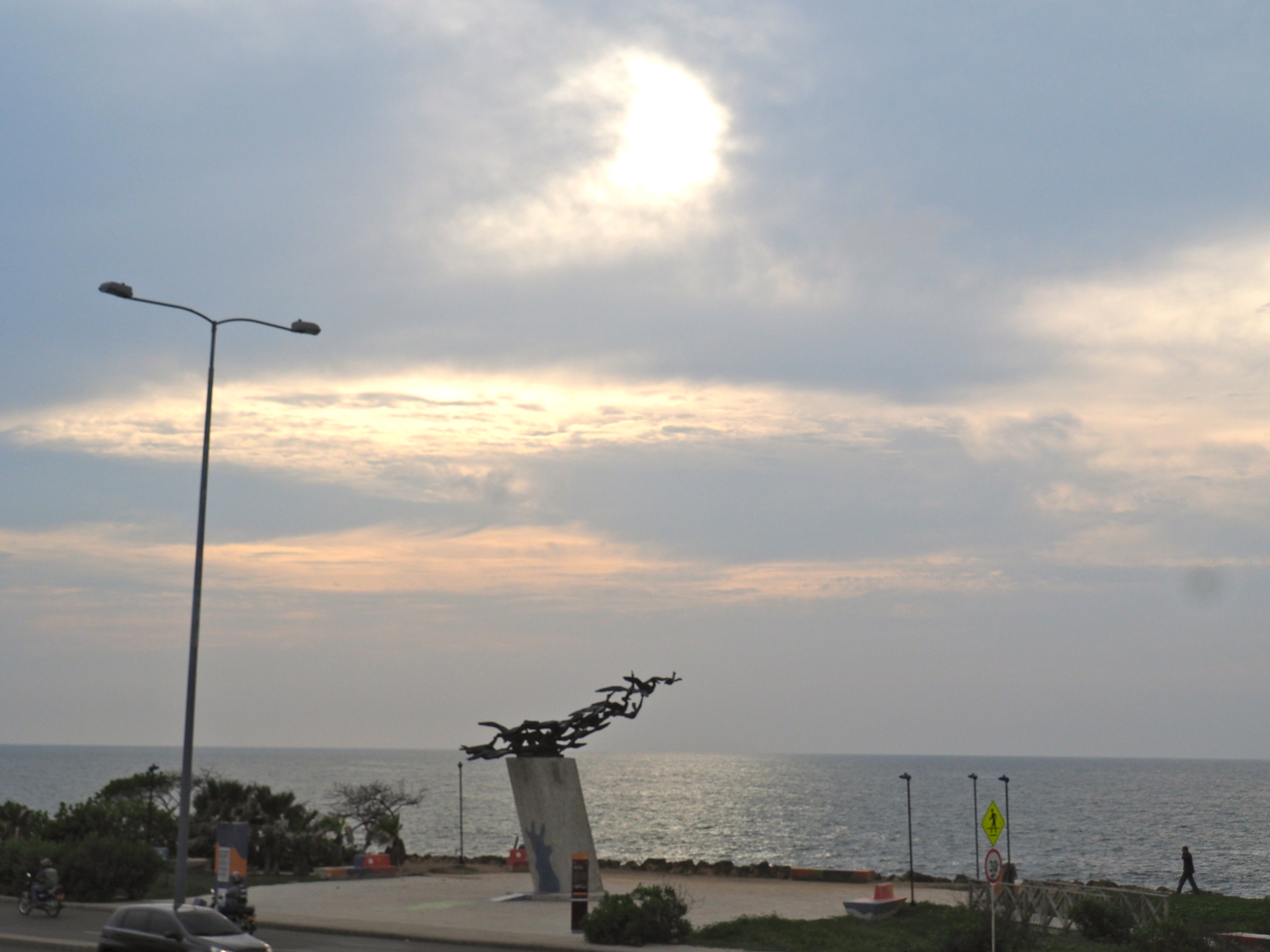
Castillo de San Felipe de Barajas Fortress
Another afternoon we took a 20-minute stroll to the Castillo de San Felipe de Barajas, renowned as the greatest fortress ever built by the Spaniards in their colonies. The imposing structure overlooks the entire city and was a military stronghold for the Colombians in numerous skirmishes.
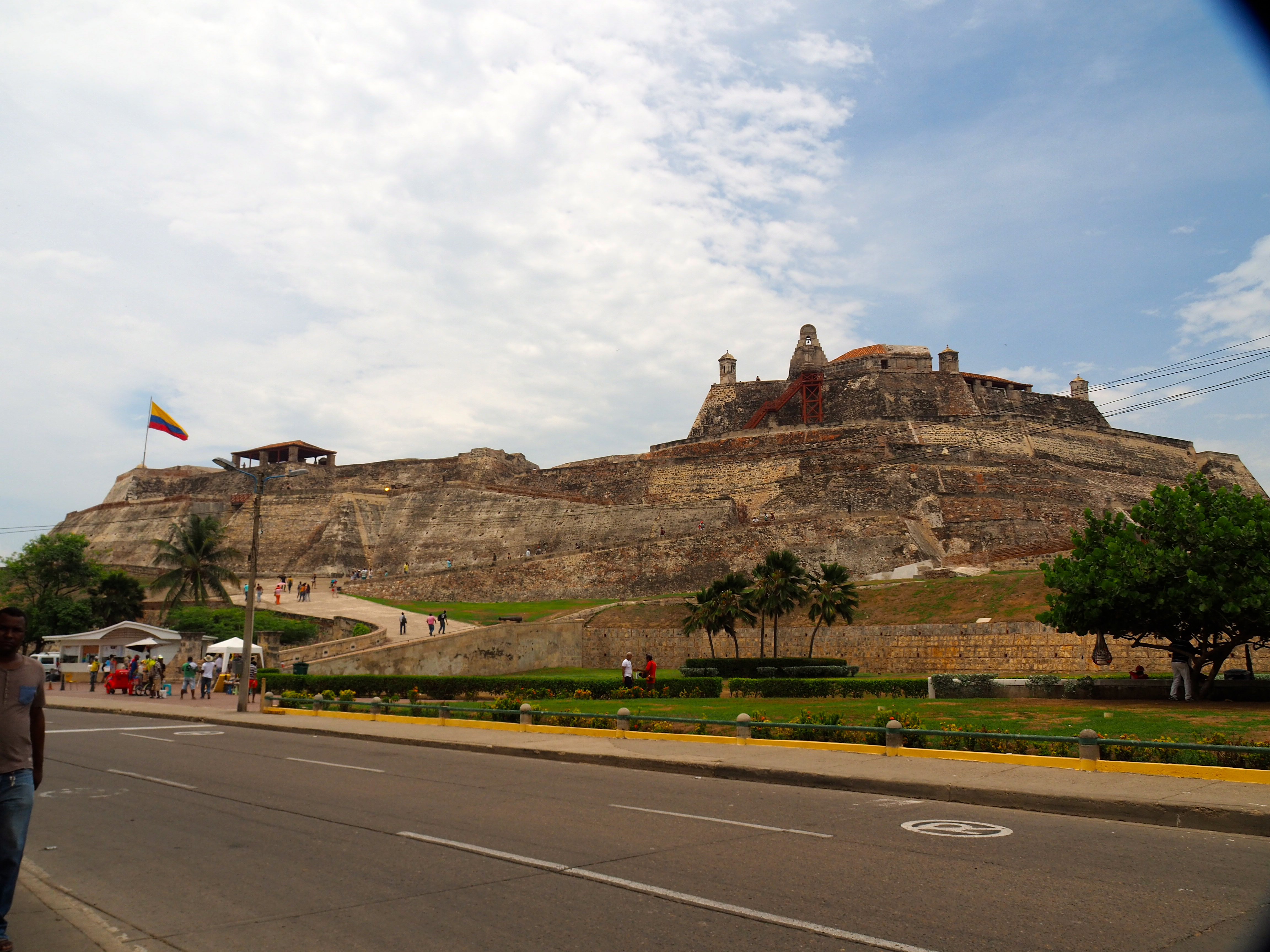
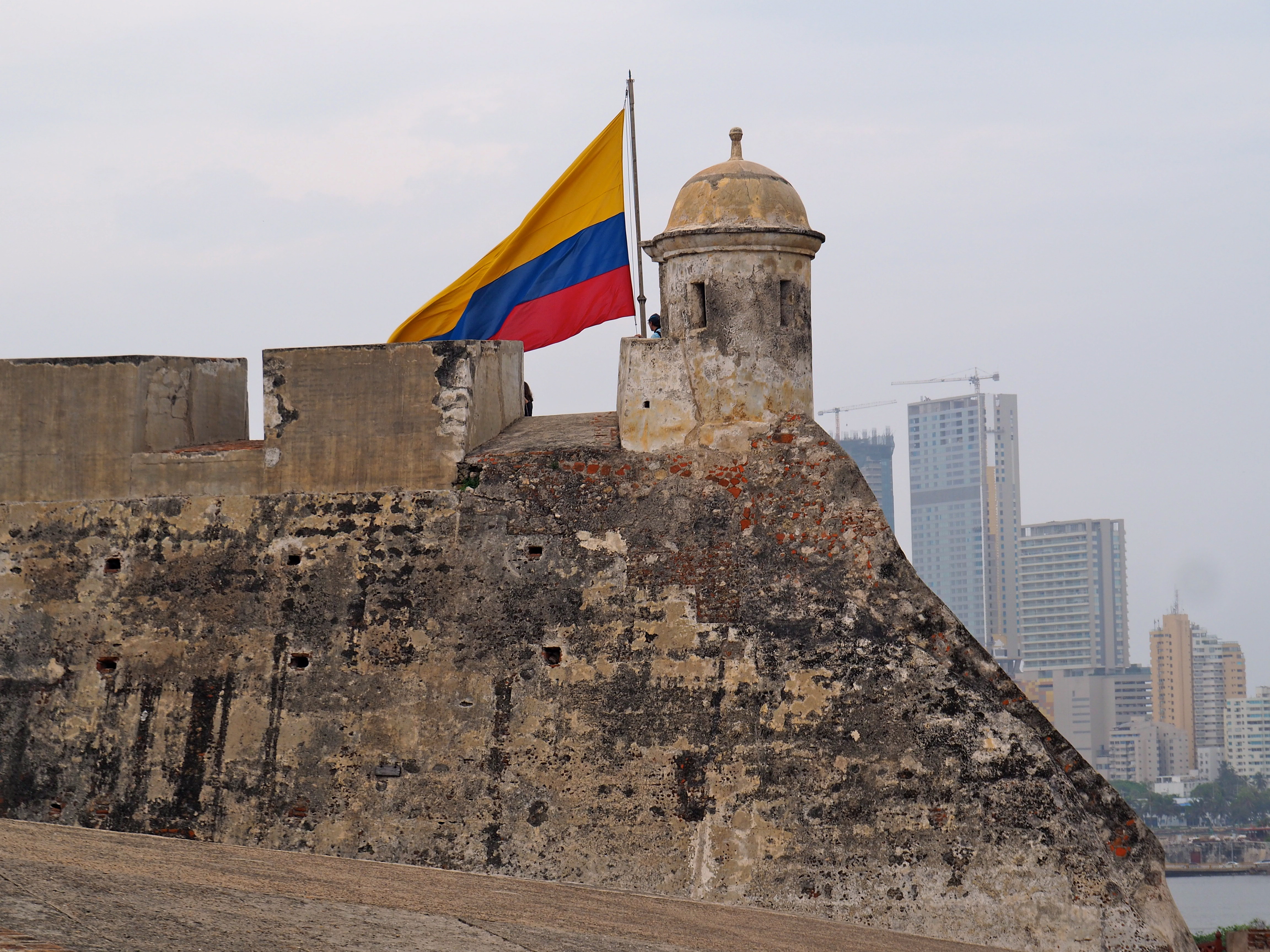
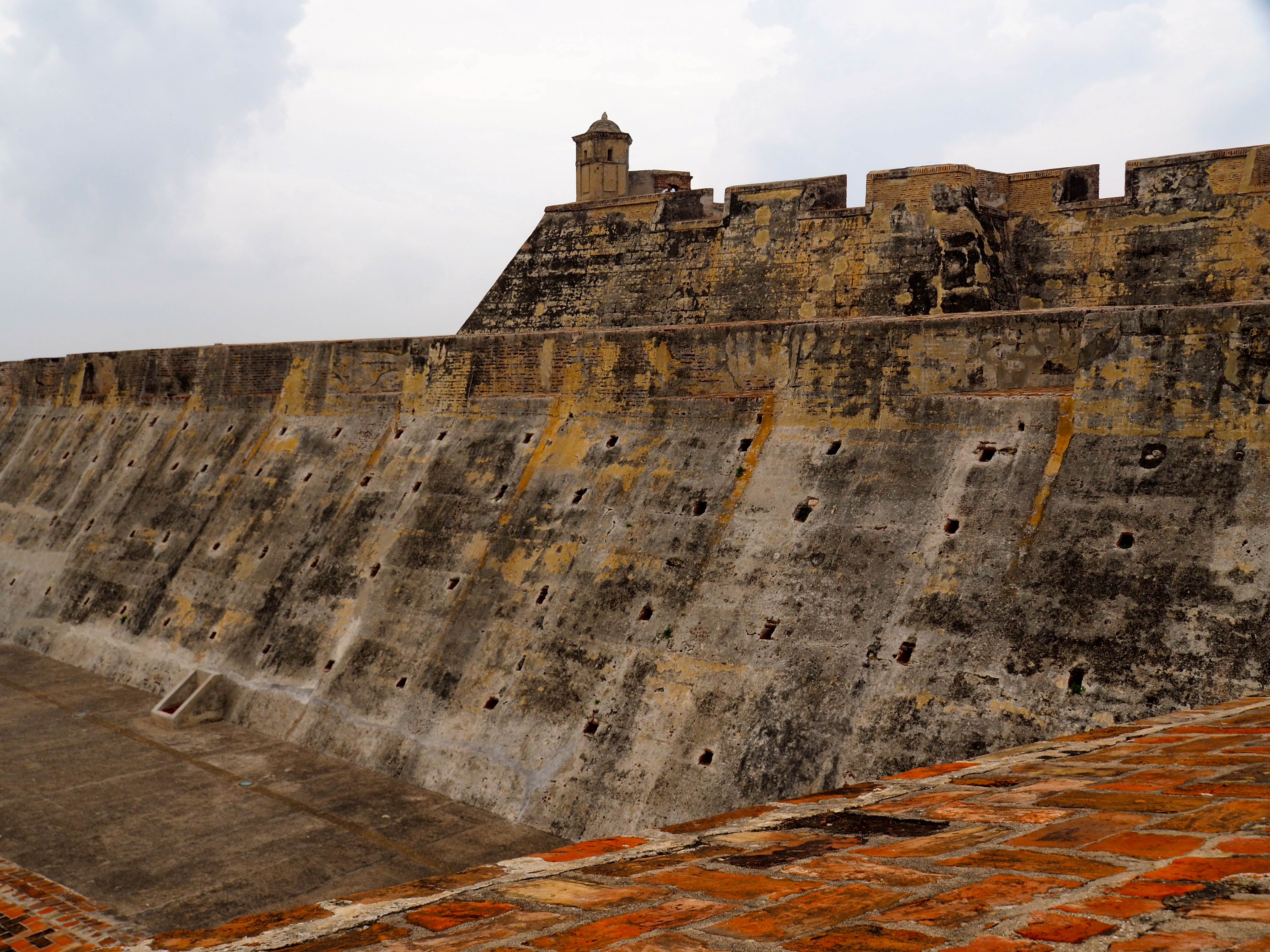
In order to build upon our limited Colombian / Cartagenian knowledge we engaged a tour guide for a private tour and spent a couple of hours wandering the site with him, learning all about this amazing fortress.
A map showing the Cartagenian maritime defence 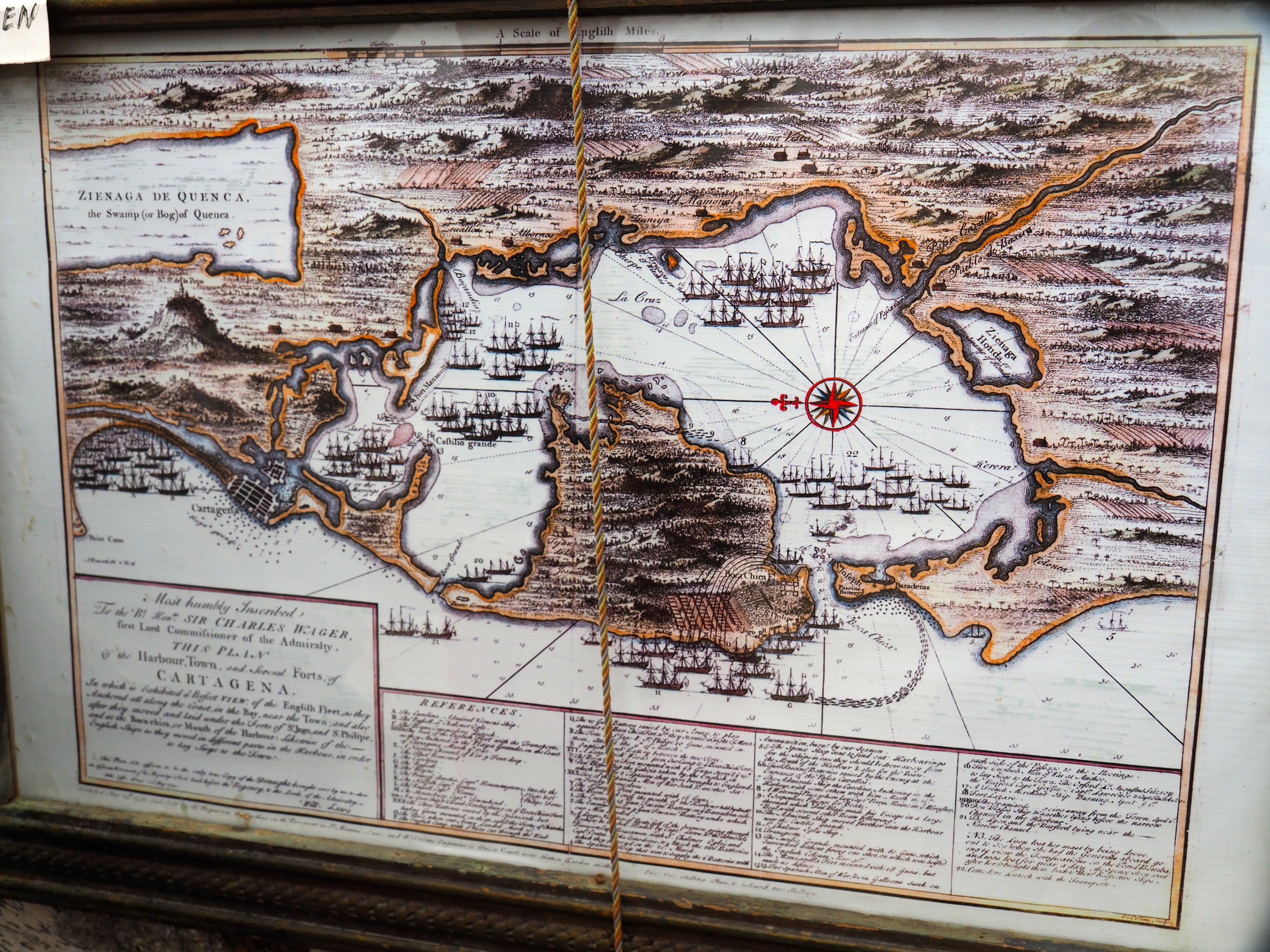
The Fortress in all its glory – it was HUGE!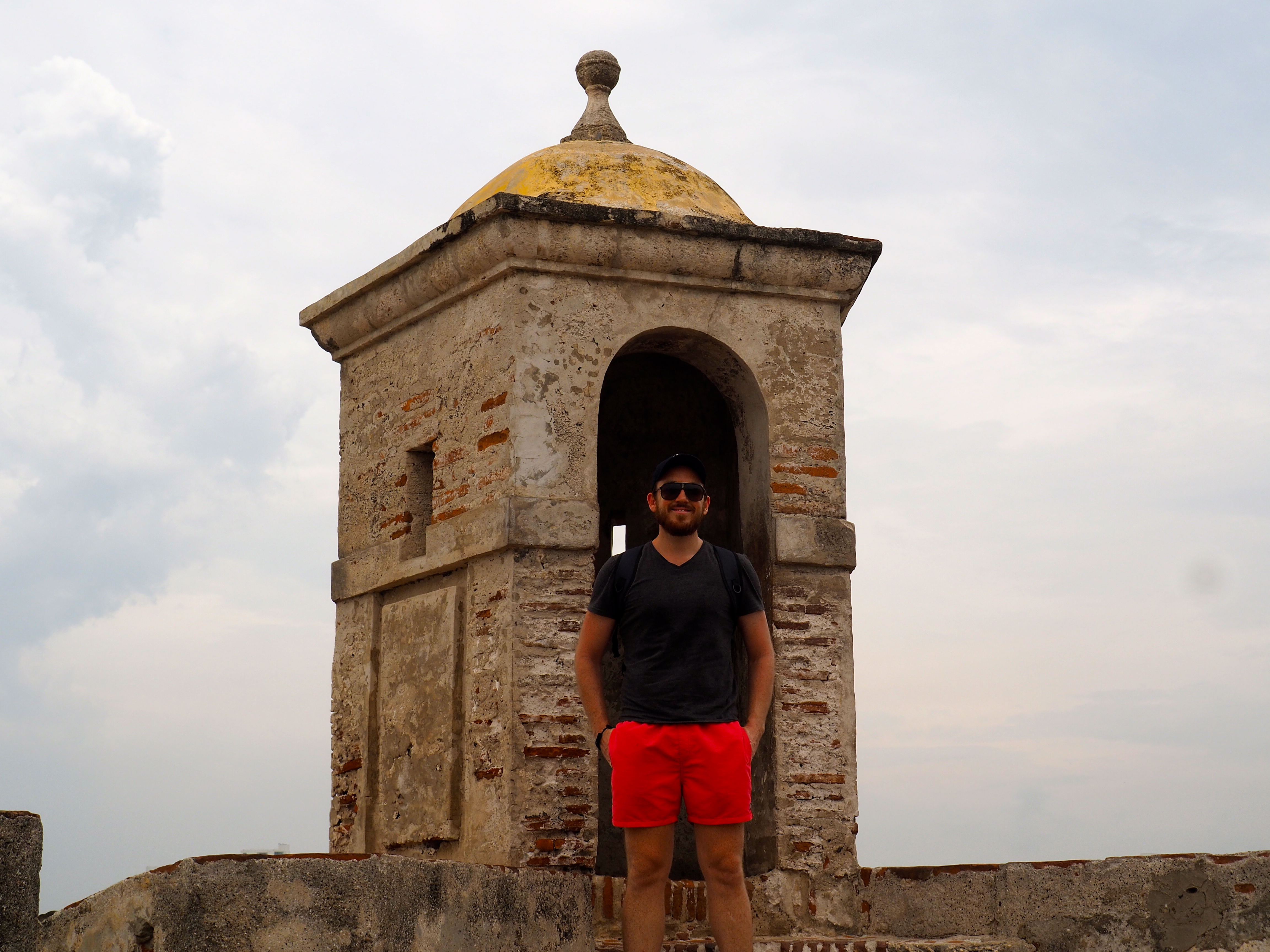
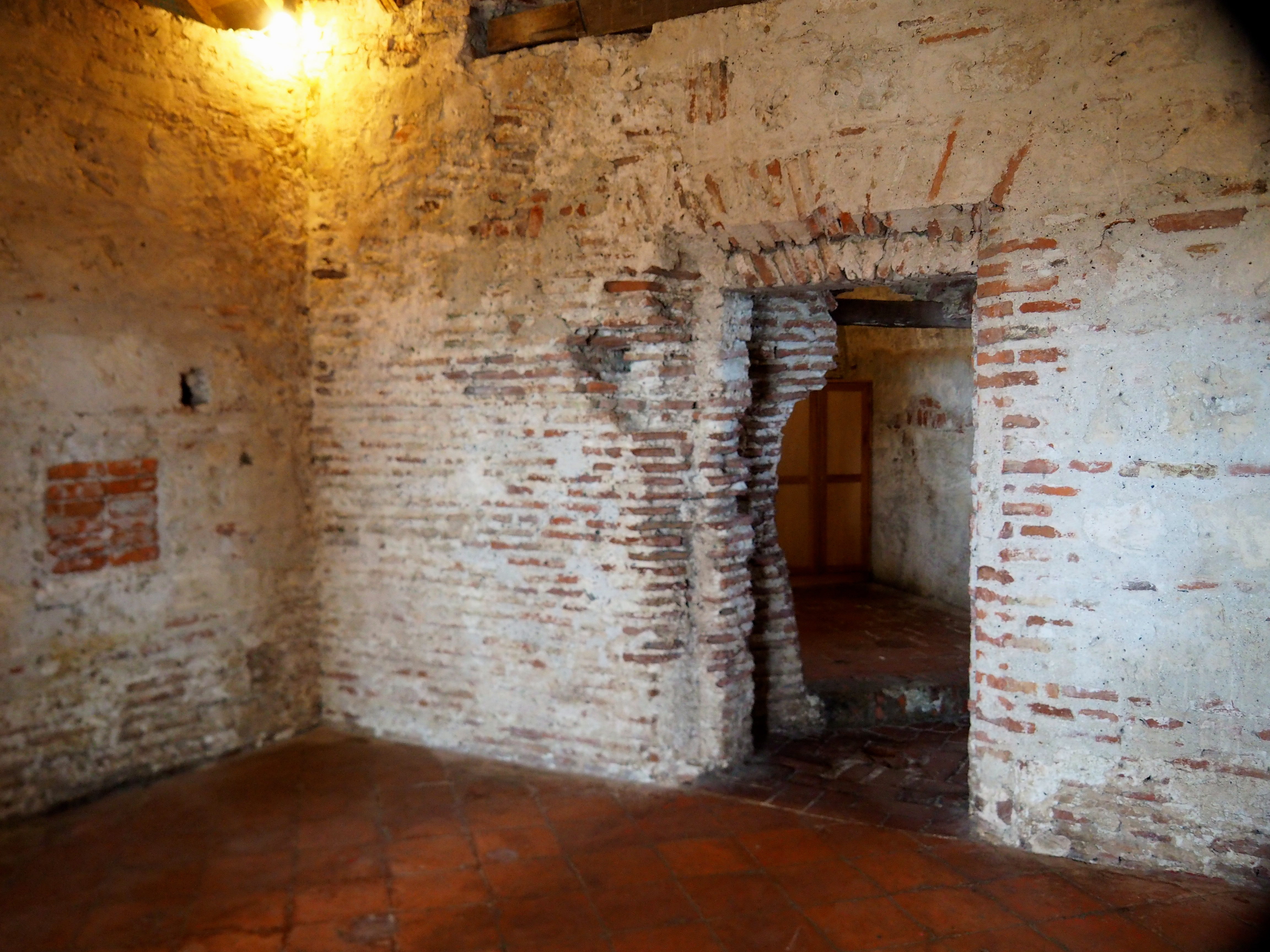
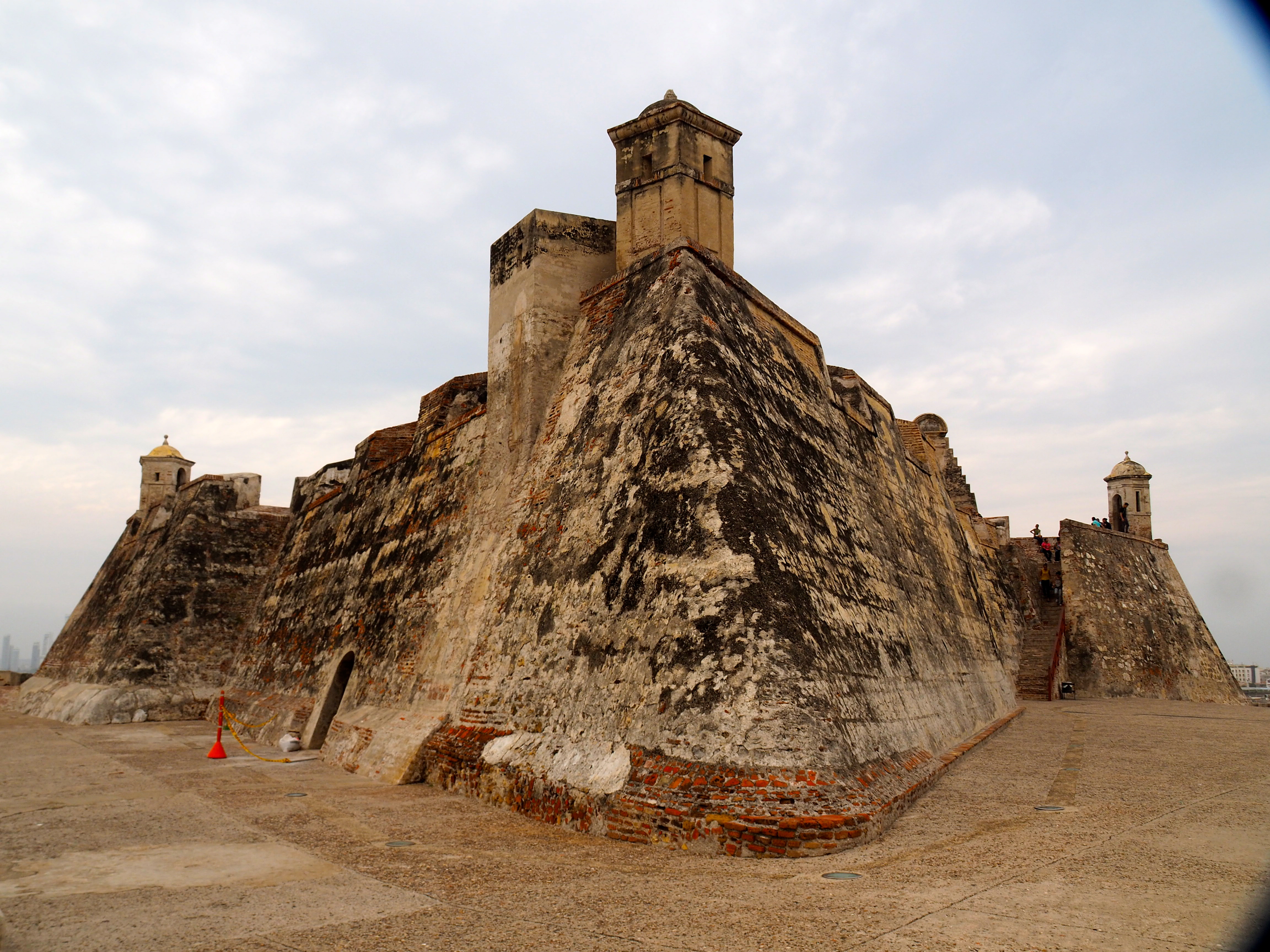
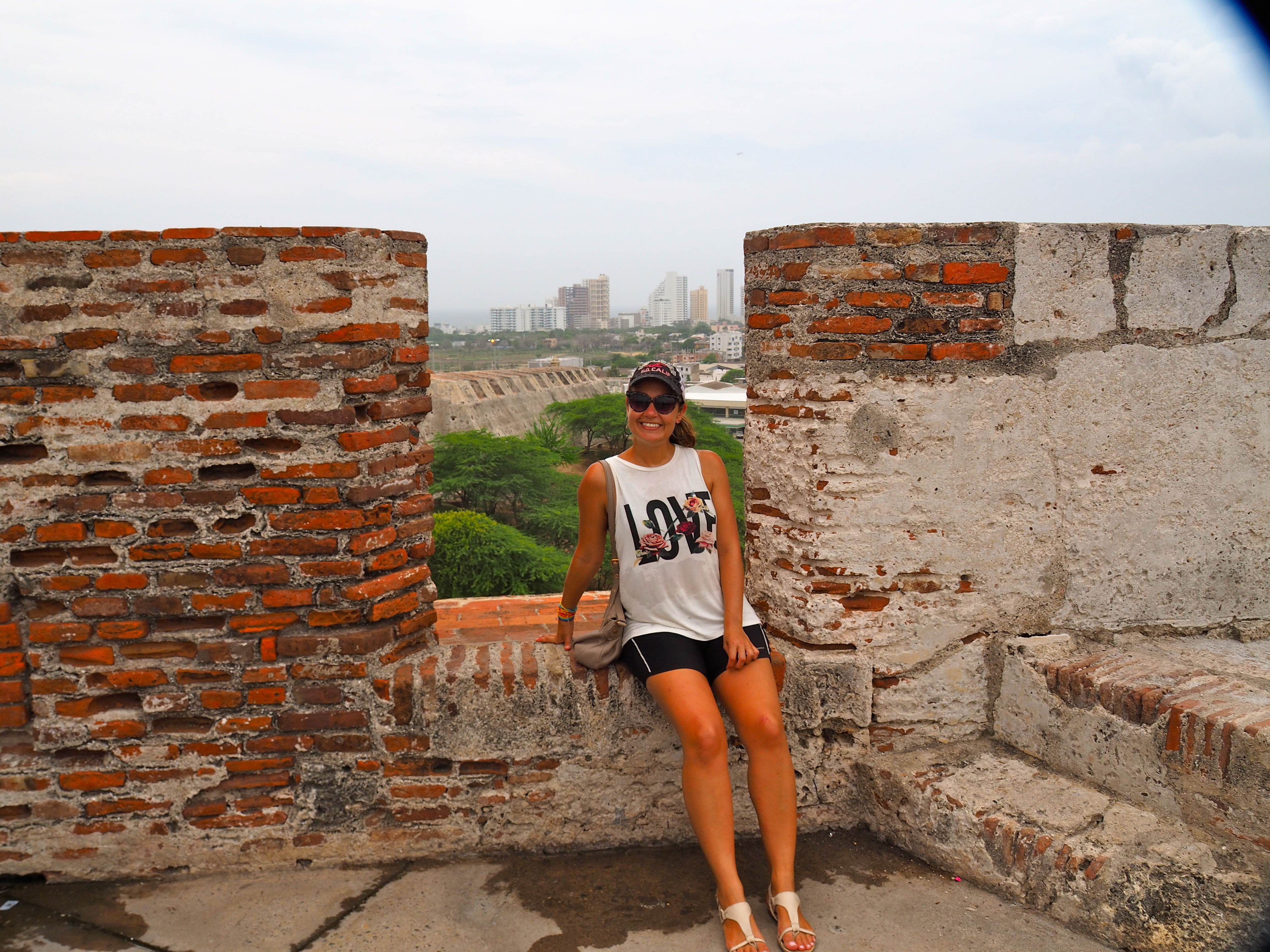
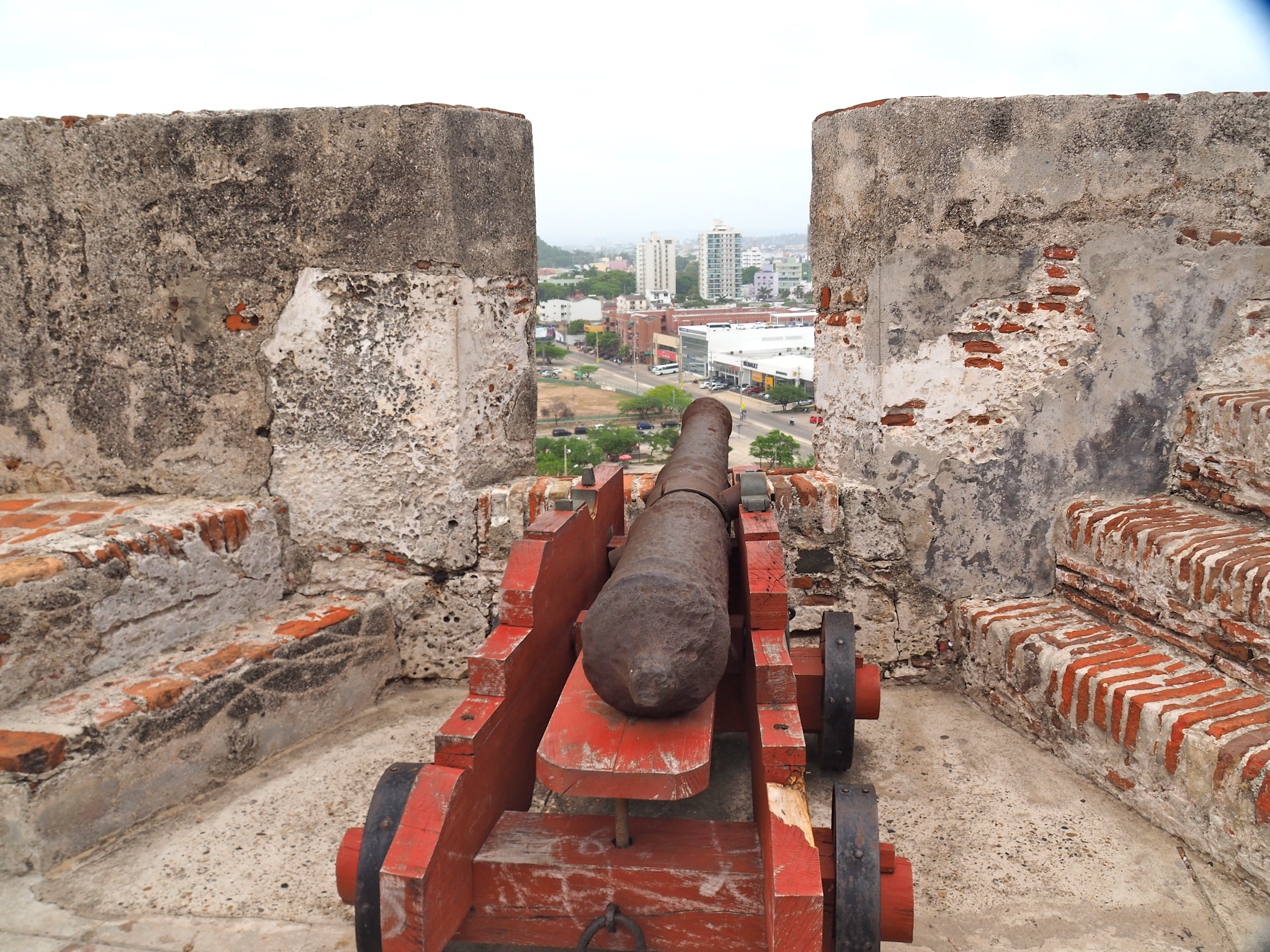
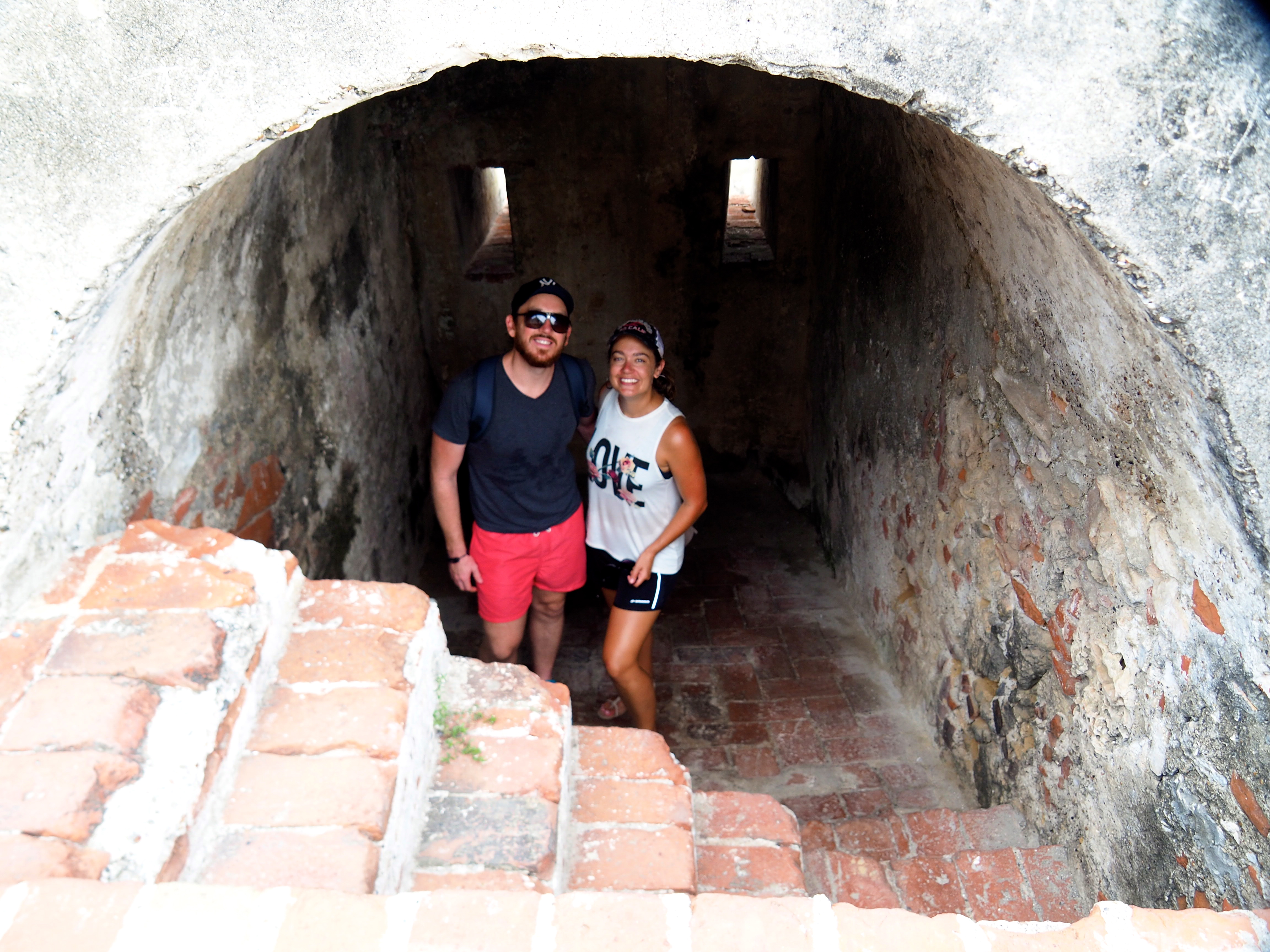
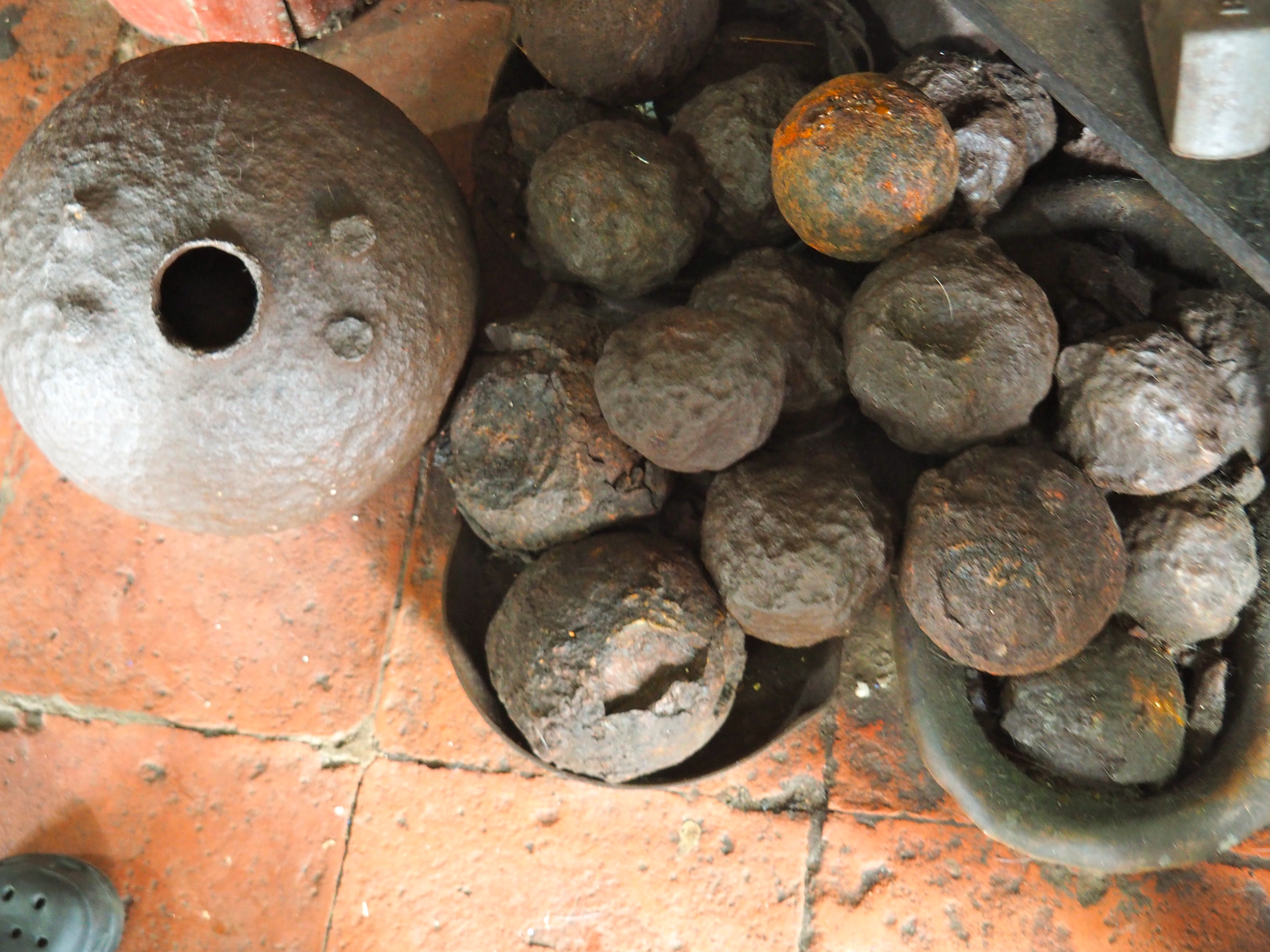
Its construction was well thought through, with hundreds of tunnels constructed in such a way as to make it possible to hear footsteps of an approaching enemy, as well as loads of the tunnels having false corridors so that if the enemy did get inside it was highly likely they would get lost and attack each other.
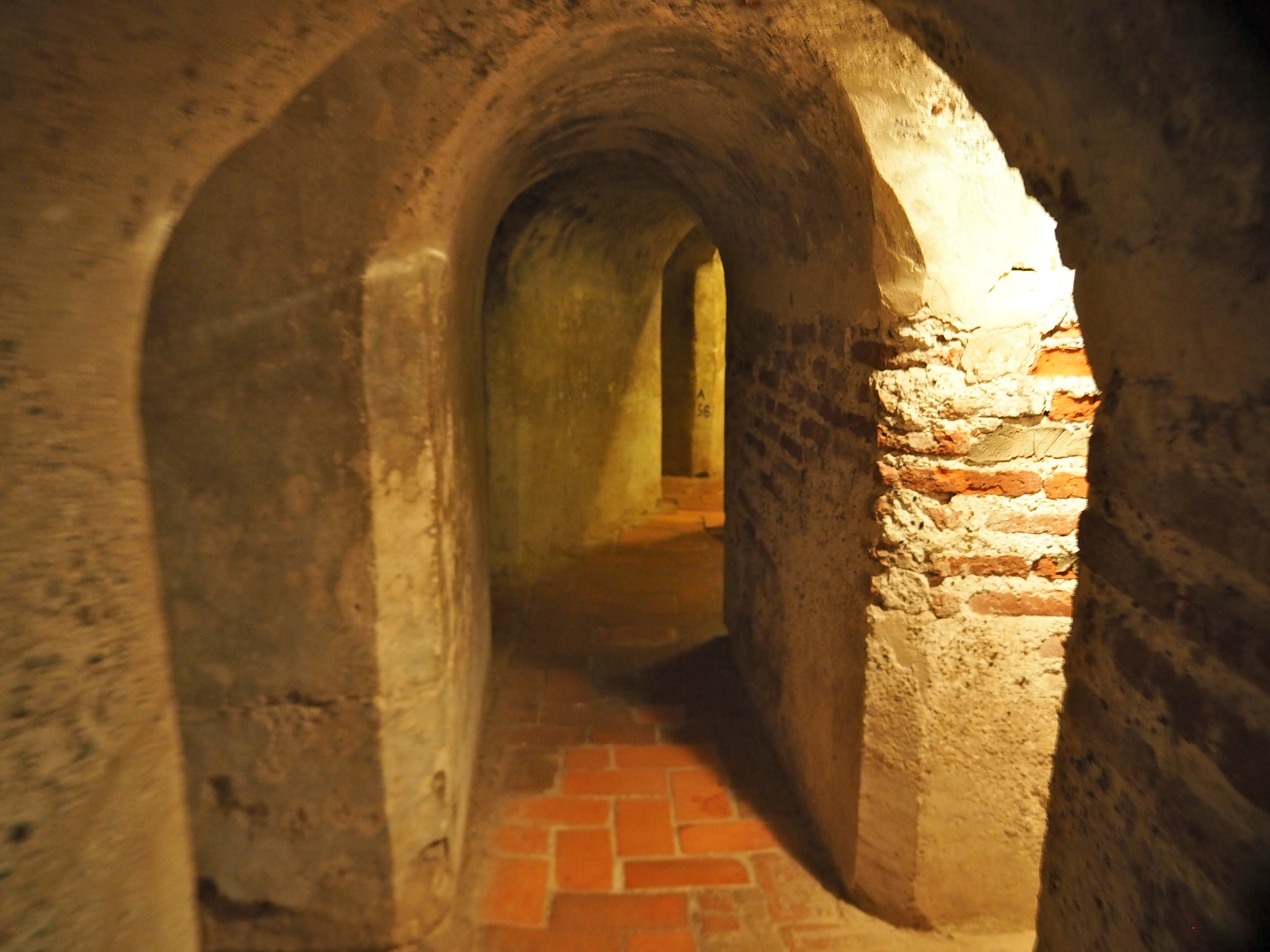
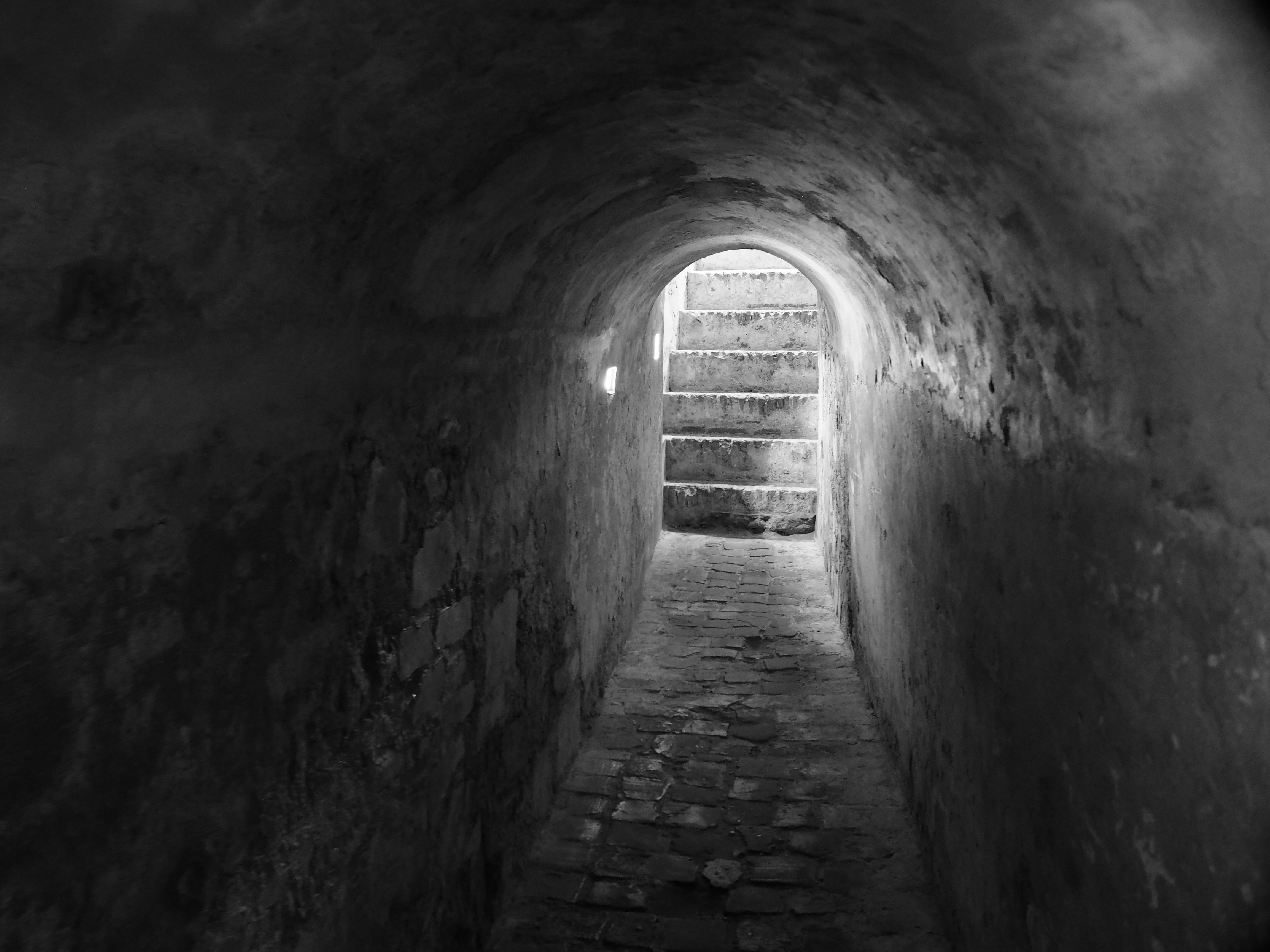
The views from the top were equally as amazing as the information we learnt and we walked away feeling as if we now have a solid understanding of not only Cartagenian history but also the Colombian psyche.
View towards Cartagena CBD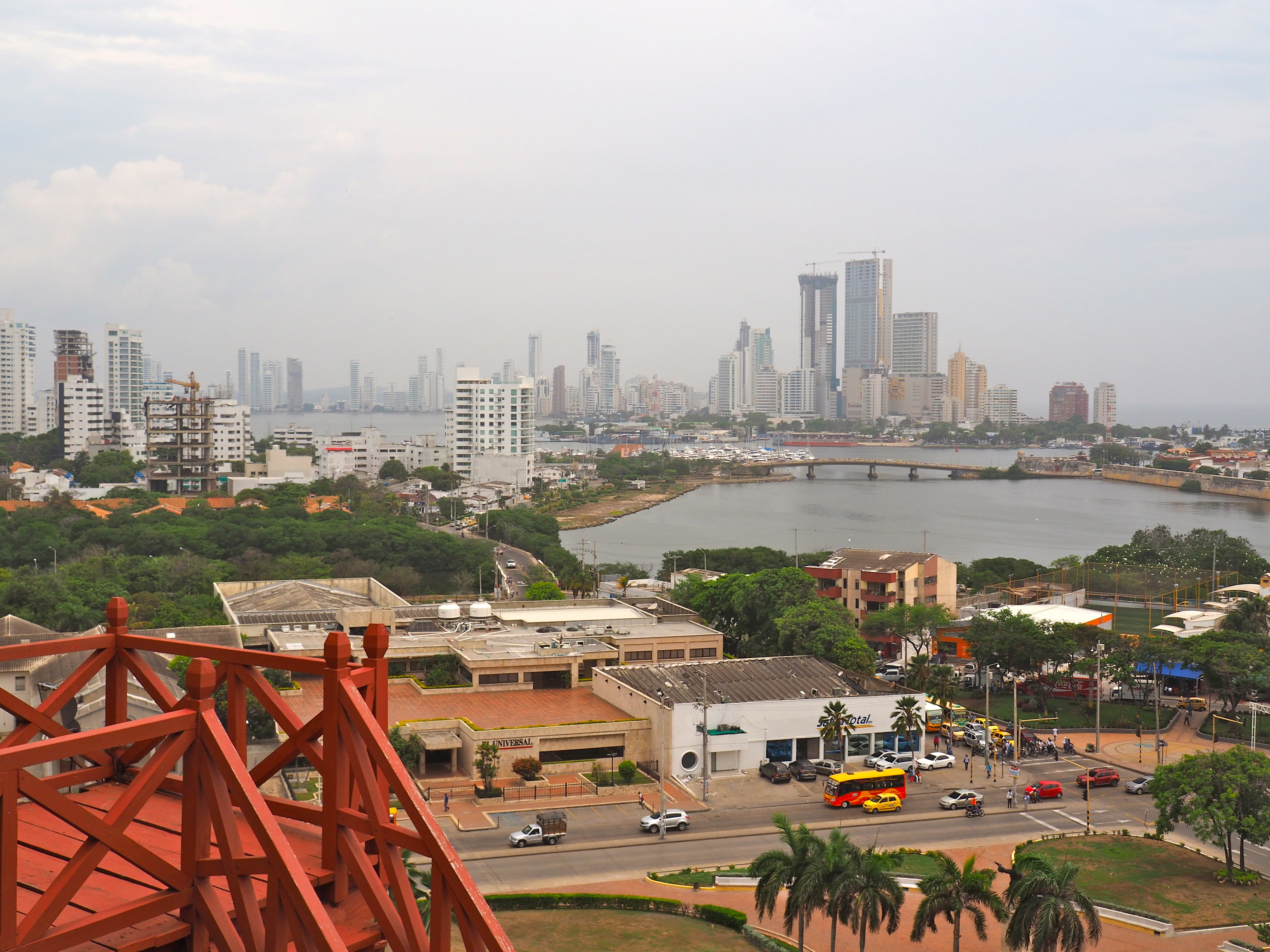
Totumo Volcano
Following a couple of days in Cartagena itself, including the day we did the walking tour, we were keen to spend one of our other full days doing something out of the city. After some online research, we stumbled across what seems to be the most popular, ‘must-try’ activity of the area – bathing in the mud volcano, Volcan de Lodo El Totumo (or Totumo Volcano).
Believed to have healing properties, the mud volcano is frequented by locals and tourists alike, but, if I am honest, it’s all a rather weird and at times uncomfortable experience! We were collected from our AirBnB in the barrio (neighbourhood) of Getsamani around 8:30am, and within a few hours we had collected our other fellow tourists from across the city and arrived at the Volcano Totumo which was about an hour and a half away.
Our first view of the ‘Volcano’ was the one below – Dave and I looked at eachother and tried not to laugh – it looked more like a termite mound with steps leading up it! Ah well, this was sure to be an interesting experience!

We soon stripped down to our bathers, threw our clothes and belongings into a locker and were instructed not to apply any sunscreen or insect repellent as it would damage the mud’s healing properties… hmmm. Pity that we then spent almost 45 minutes standing in the blistering sun on the side of the Volcano with only our bathers on, getting eaten alive by midgies and mossies, and roasted by the sun!


Finally it was our turn, and after gingerly climbing down the rickety and slippery bamboo ladder into the mud, I was surprised when one of the local guys who acts as a ‘masseuse’, told me to “lie back miss, lie back”.
I soon realised that the mud is so thick that you literally cannot help but float in it! So I tipped my head back, and let the local dudes guide me into the massage area where they started covering me in the mud (slightly awkward!).

Soon enough, Dave slid in next to me, and our tour guide was snapping some pics from up the top – it is a pity the sun was shining so brightly as I don’t think I got one decent shot of me not squinting in the sun!

Once Dave and I were covered in mud and adequately ‘massaged’, we were slid into a corner by the locals and we then hung out for 15 or so minutes. The mudbath was actually a lot smaller than we were expecting and boy, did they cram people in there! I think they fit maybe 20 tourists in at a time, not to mention the five or so masseuses!

Anyway back to hangin’ out in the mud – it was the weirdest feeling as by this time, we were sitting upright with our knees propped near our chests, but as people struggled with the buoyancy there were legs and hands everywhere and we were a right mess of limbs between us all!
Not to mention the fact the mud would randomly send massive air bubbles up through its centre, so a huge bubble would burst right in front of you, and the stink was pretty palpable!

Once we had had enough, it was time to brave the even slipperier ladder out of the mudpit – this proved harder than it looked although Dave made it look easy!

We got the obligatory ‘covered in mud’ pic at the top, then made our way down the volcano to the ‘lake’ where we were advised the local ladies would help us shower.

Well, this was a different kind of shower to any that I have experienced previously! The ladies basically had huge drums of the grossest-looking, yellow water from who knows where, which they proceeded to dump all over us as we sat on a rock next to them.
They then scrubbed us from head to toe – including fingers in ears, and inside bathing suits (nowhere too rude thank god, they let us do that ourselves) but there was very little dignity left at the end of it. Poor Dave copped a mouthful of the horrific water and as a result ended up being pretty sick later that night and the next day – only proving our initial thoughts that the water was filthy.
However, it felt good to have the majority of the mud rinsed off (although my bathers are ruined as they’re stained a lovely brown colour…!) and we celebrated back at the bus with a cold beer or two. We then finished off with a delicious fresh fish lunch at a local restaurant before making the way back to Cartagena in the late afternoon.

All in all, a bizarre but fun, ‘glad-we-did it-but-probably-wouldn’t-do it-again-but-would-recommend-it’ experience.
Getsemani
The neighbourhood our lovely AirBnB was located in was about a seven minute walk from the walled old town and probably the most picturesque part of the city, in my opinion. It is one of the oldest suburban locales, but is also recently gentrified so is very easy on the eye, and very safe.
Again, the colourful houses and flowers everywhere helped make this one of my favourite accommodation locations.
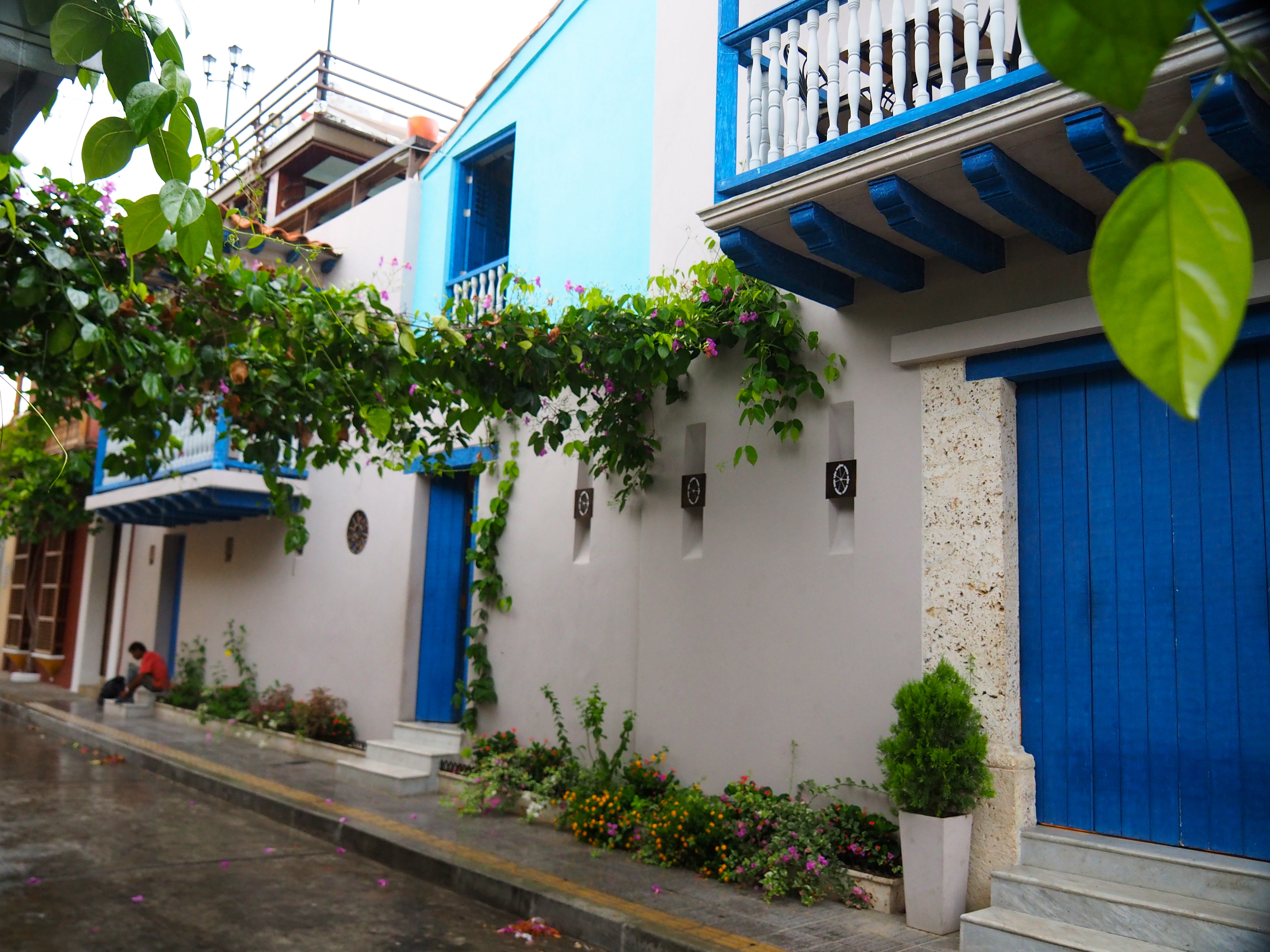
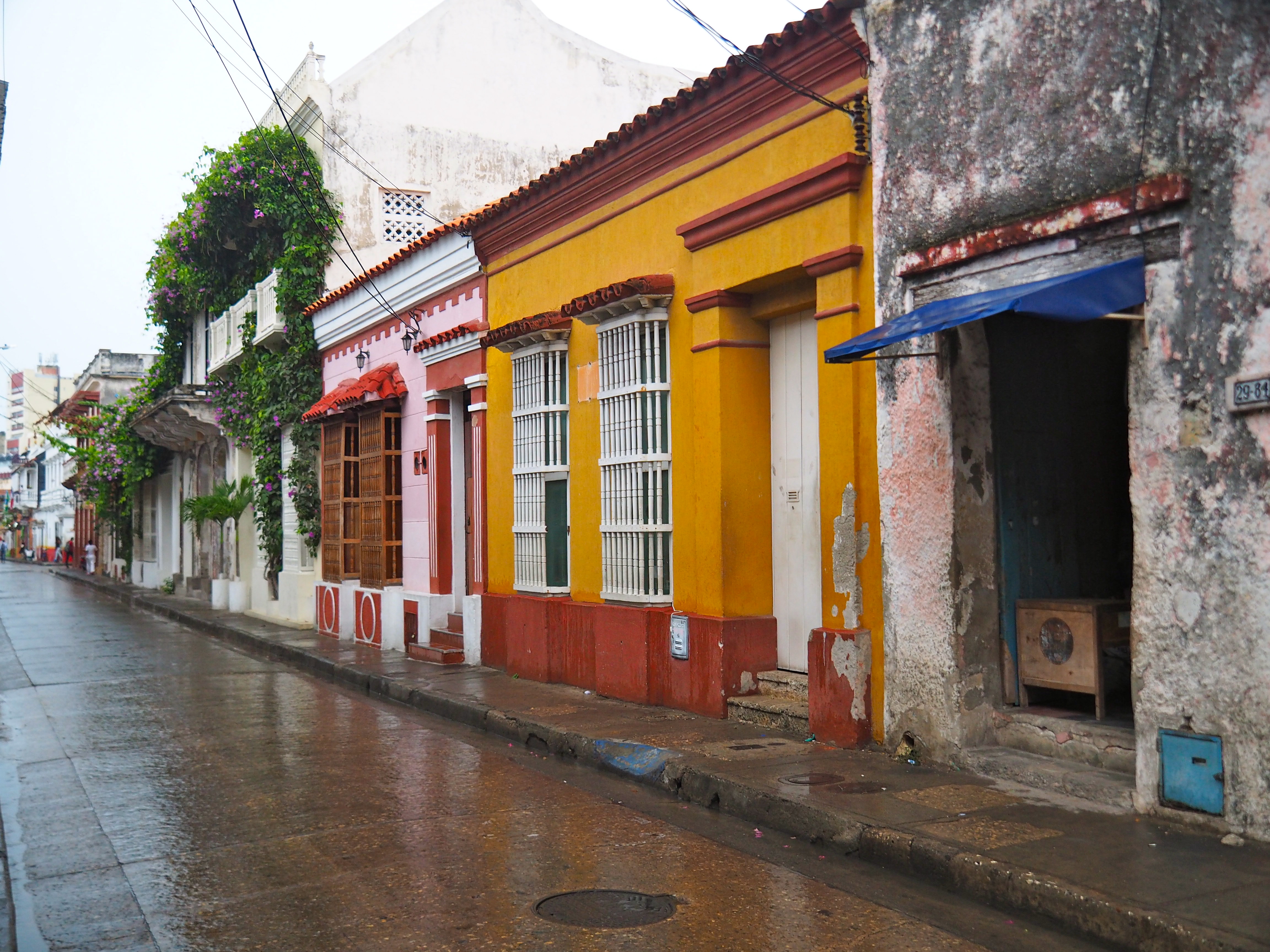
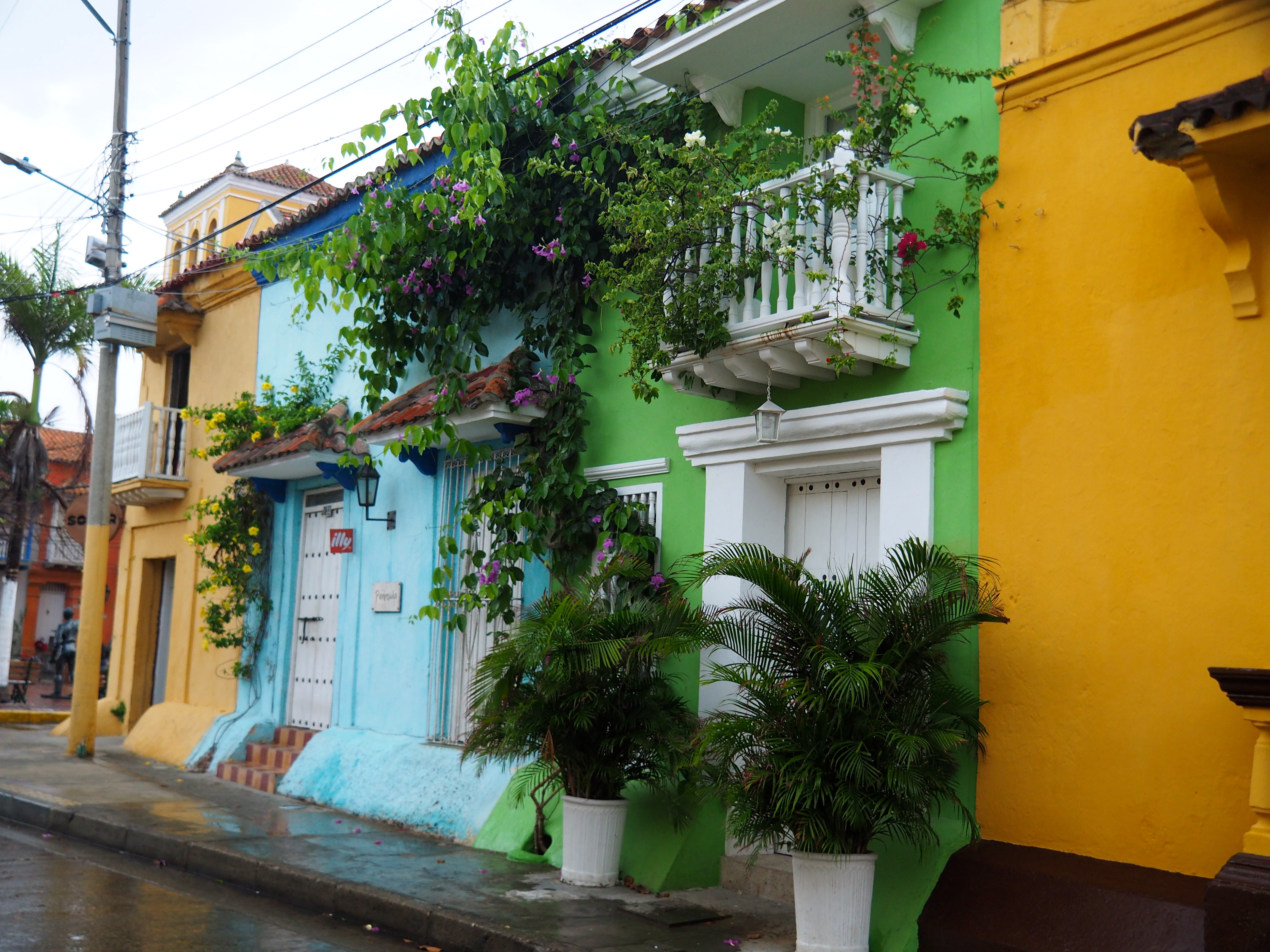
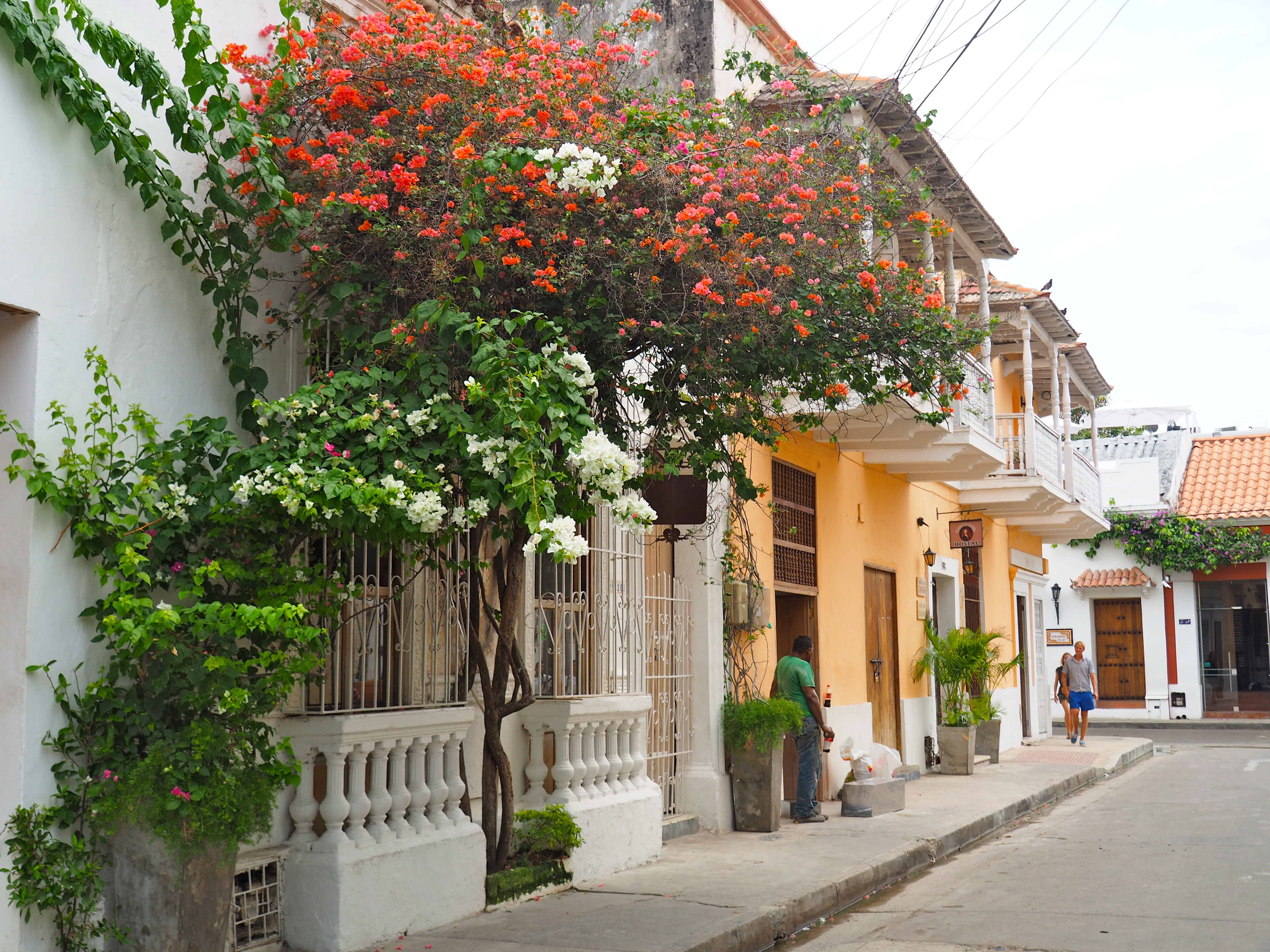
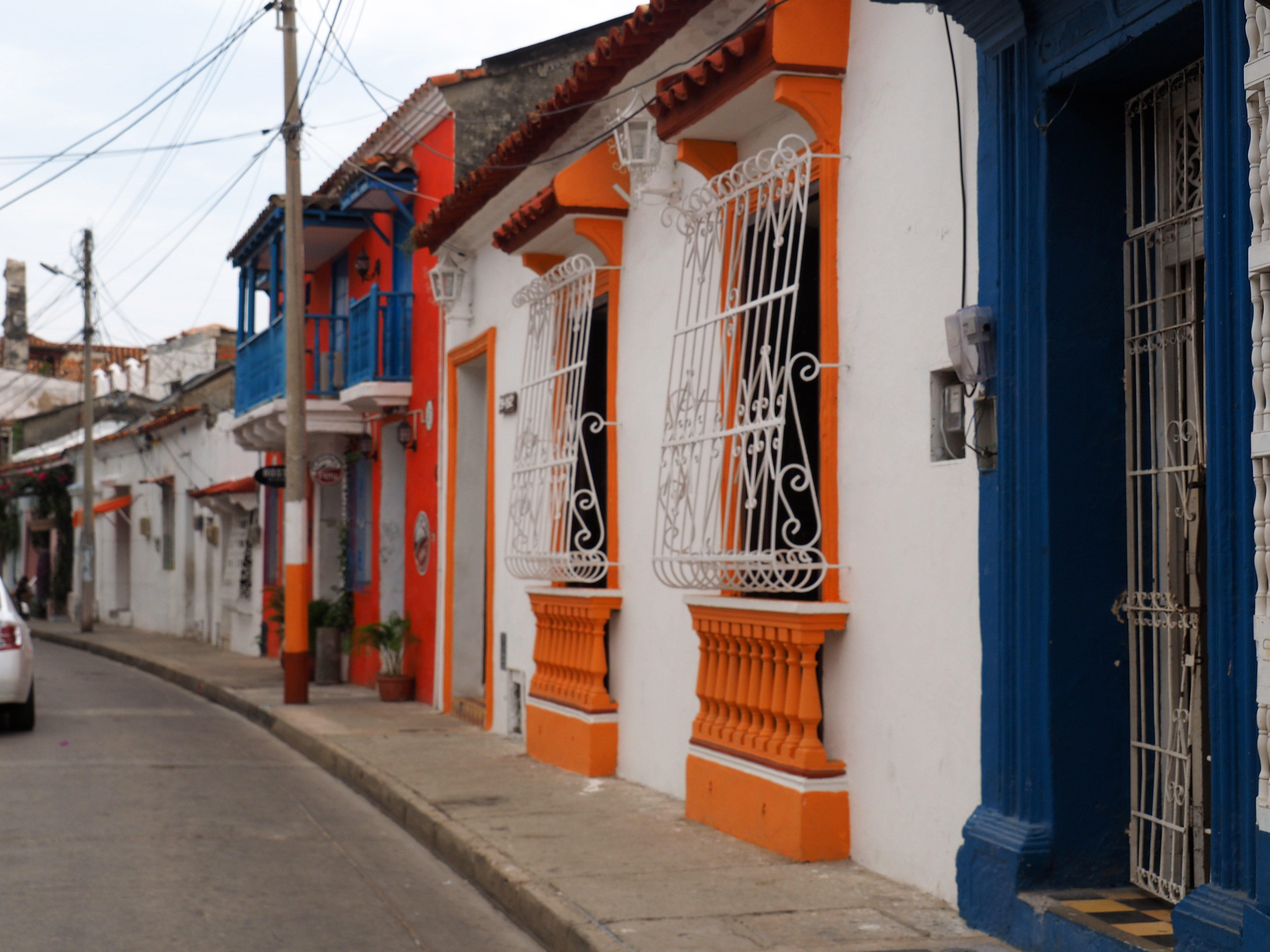
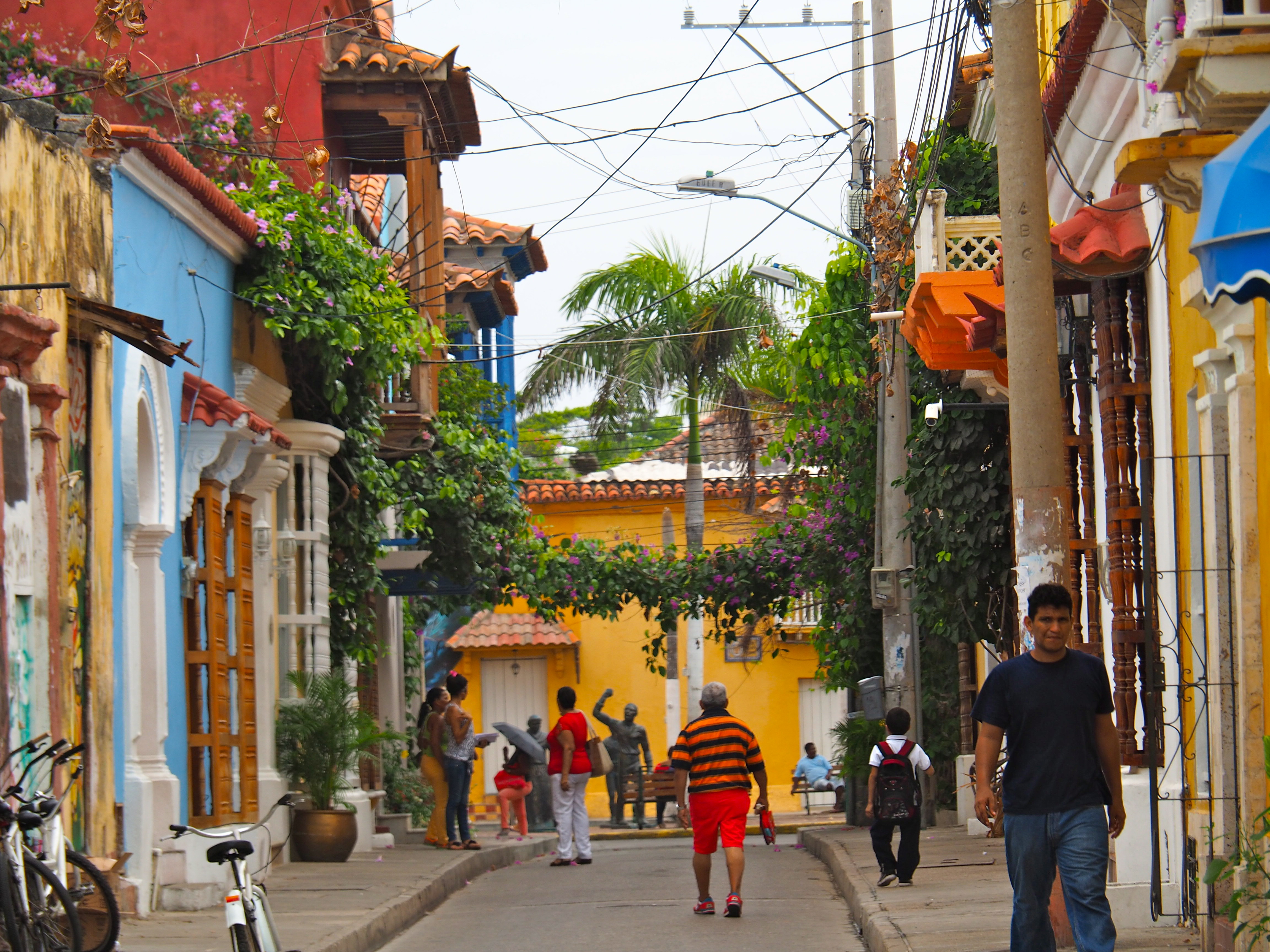
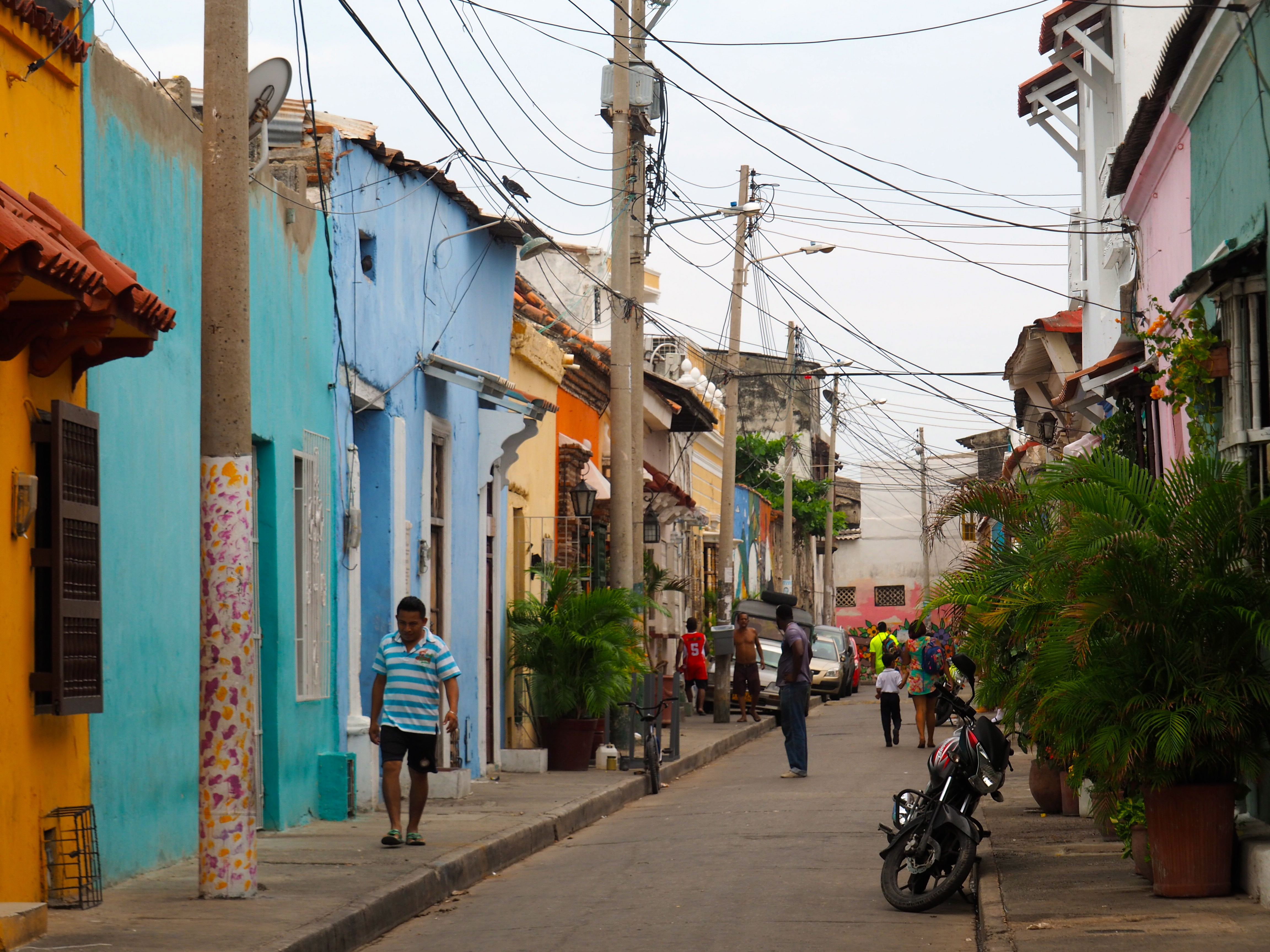
Plaza Trinidad, one of the busier squares in the neighbourhood, is surrounded by restaurants and plays host to all manner of street food and drink carts during the day and night.
Plaza Trinidad after a brief sun shower
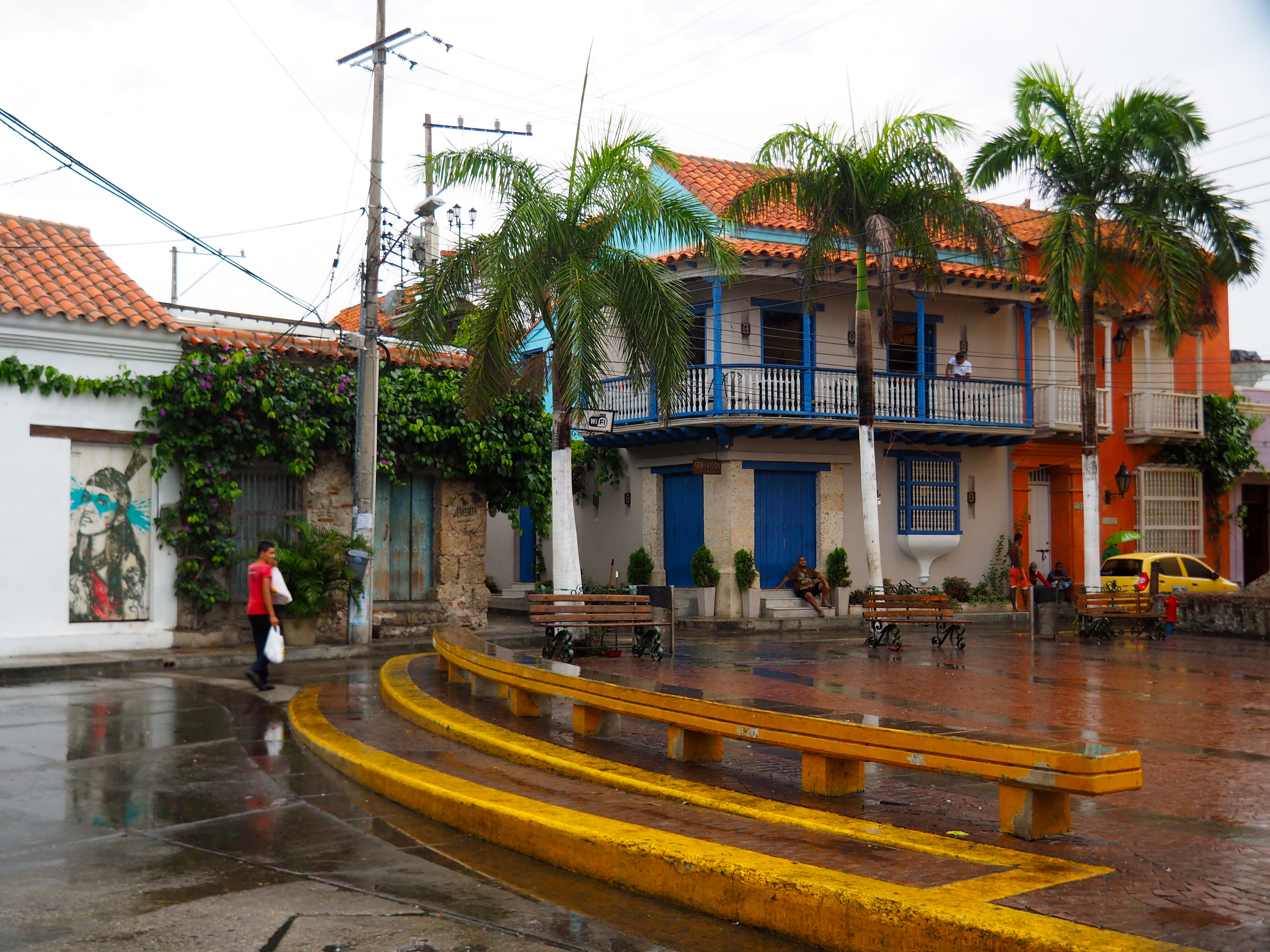
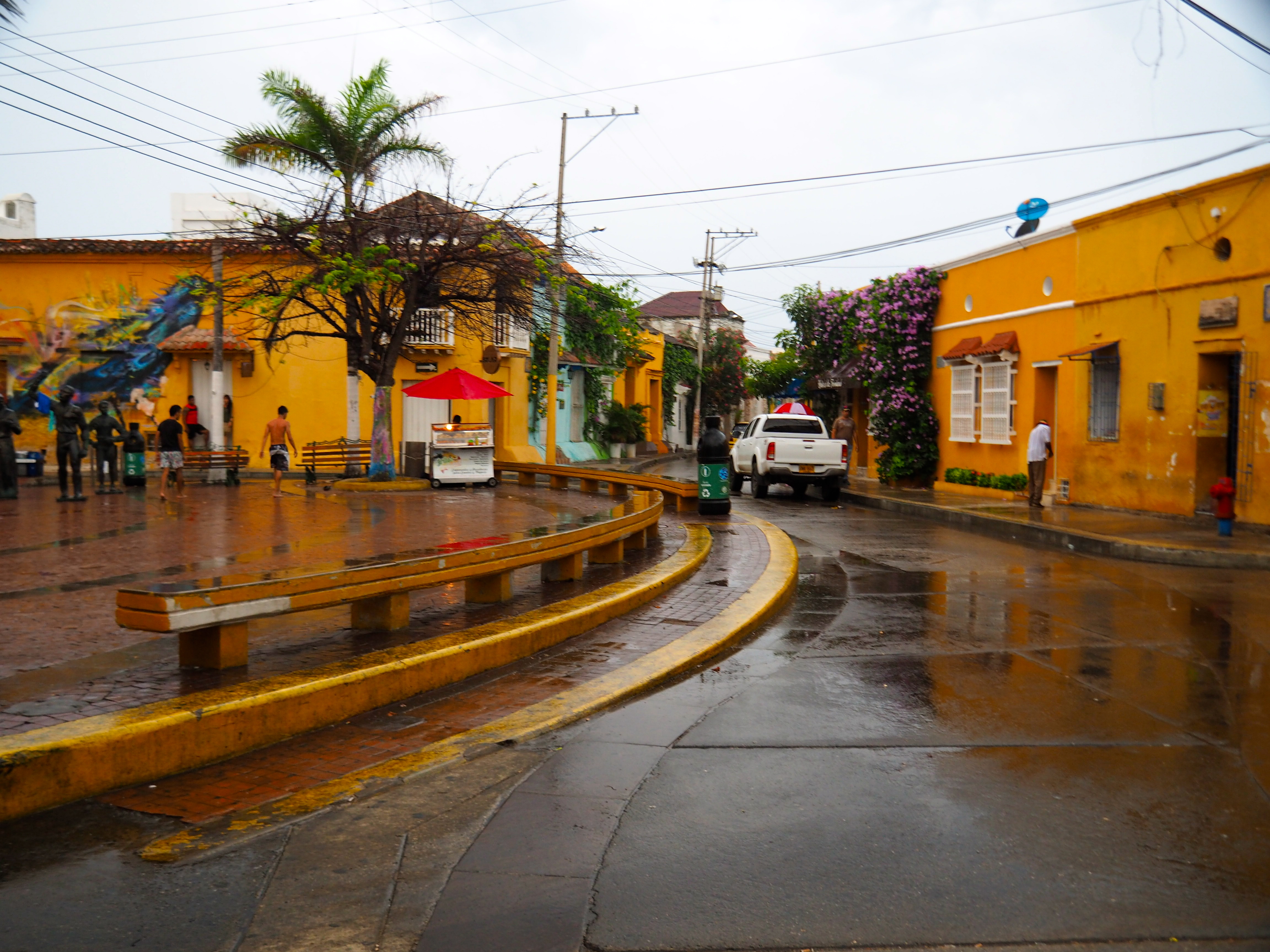
I would get my daily juice from one man, and we also enjoyed breakfast empanadas from another stand. At night-time there were hamburger and arepa stands galore.

Arepas are a national speciality – a flat bread doughy concoction, often filled with, or topped with, cheese. Arepa con queso is a Cartagenian favourite and we saw loads of street carts selling these all over the place.
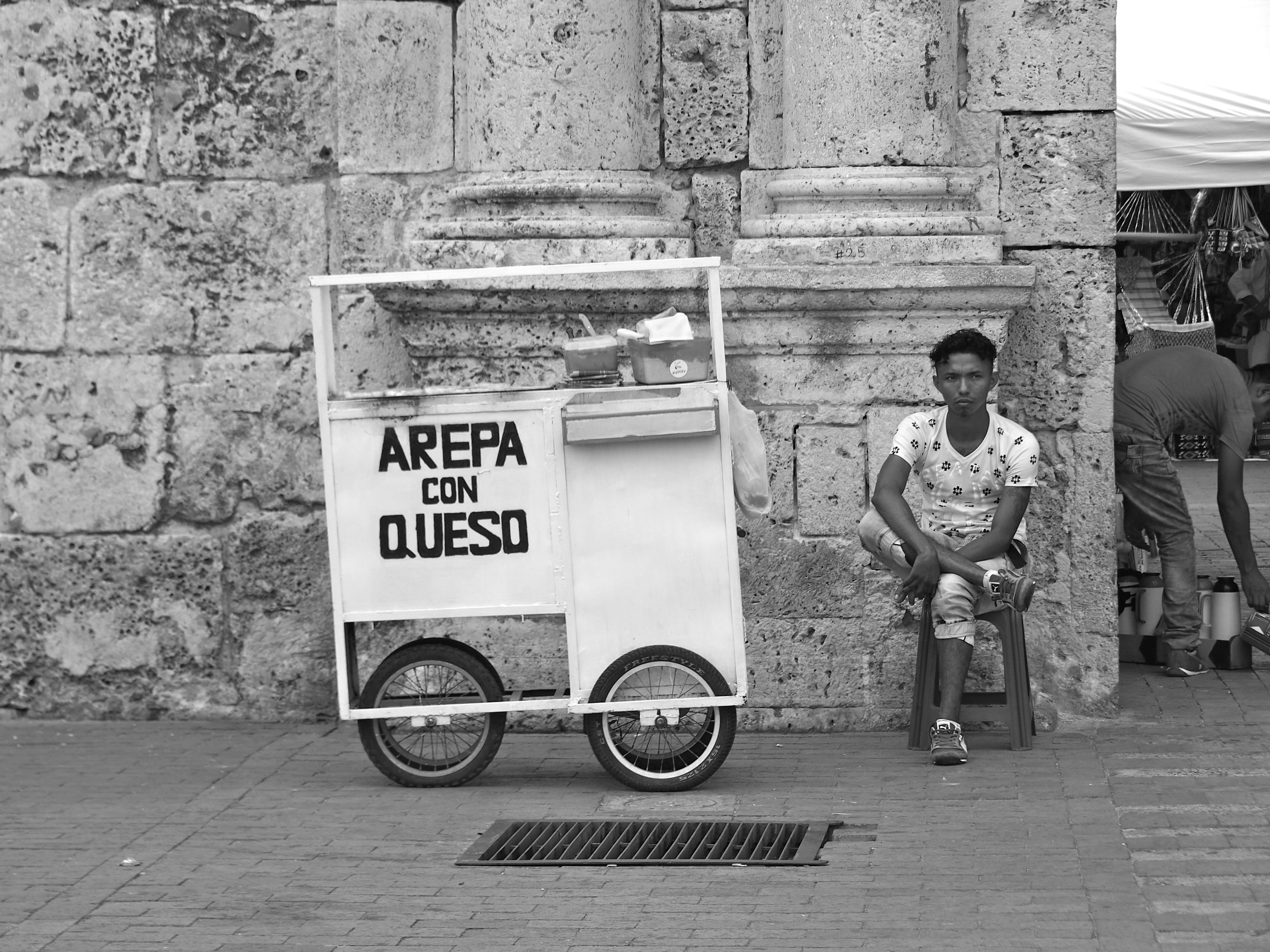
We totally loved Getsemani and would highly recommend it as the best locale to stay in if you visit Cartagena – everything is within walking distance but you benefit from living amongst the locals, and cheaper prices. Winning on all fronts!
My final thoughts on Cartagena (and something that would be reflected in every other place in Colombia) is that the country is SAFE, INVITING and has so much to offer. Its people are welcoming and jovial, the food is delicious especially on the coast where fresh seafood abounds, and there is most certainly no eminent danger to tourists, at leads no more than any other country I have travelled.
All of the Colombians involved in tourism or hospitality, or in fact, any whom we engaged with, begged us to spread the word to our loved ones back home that Colombia is ready, willing and excited to receive more tourist and travellers. So people, there it is – straight from the horse’s mouth – visit Colombia! It is AMAZING!!
